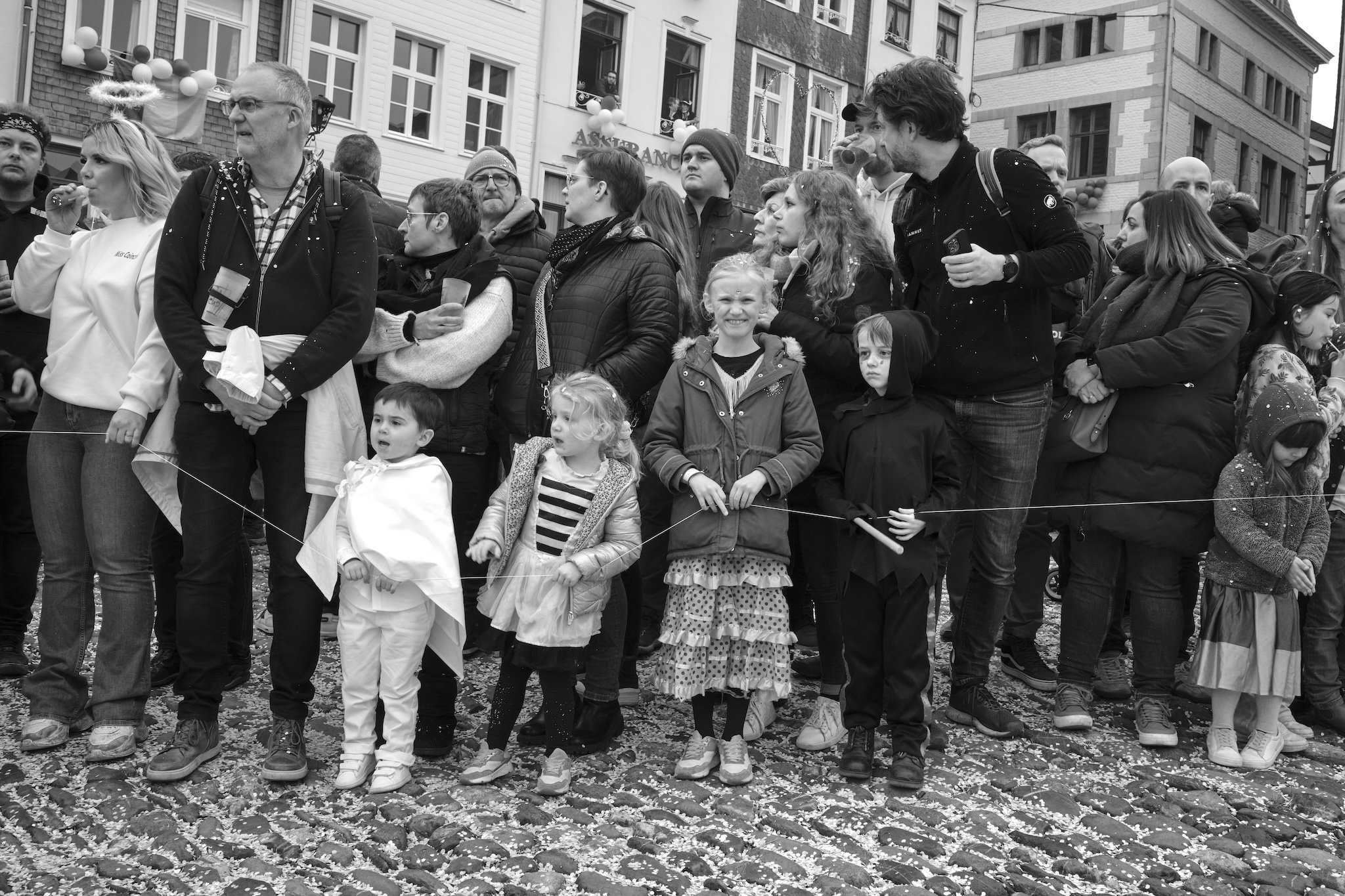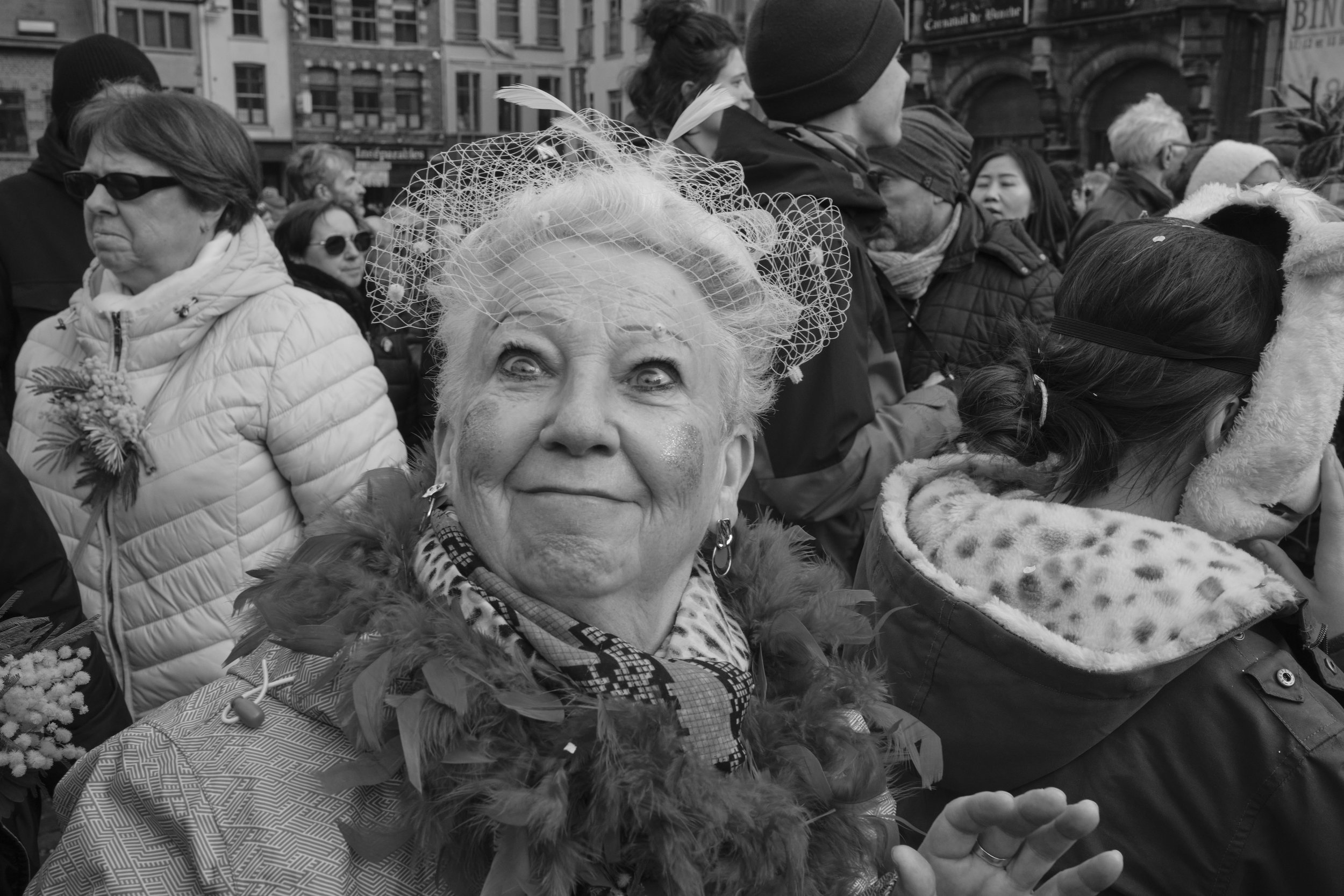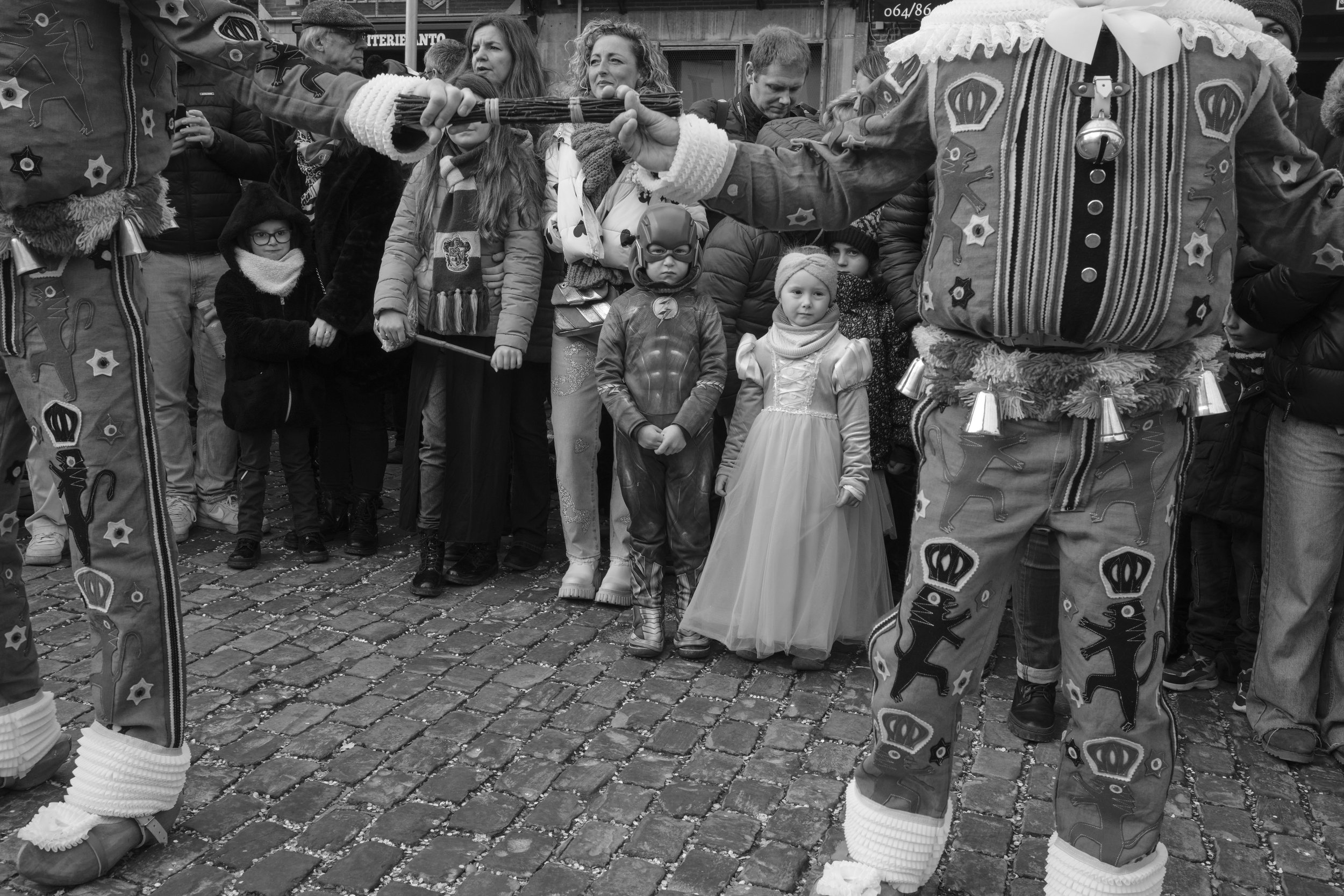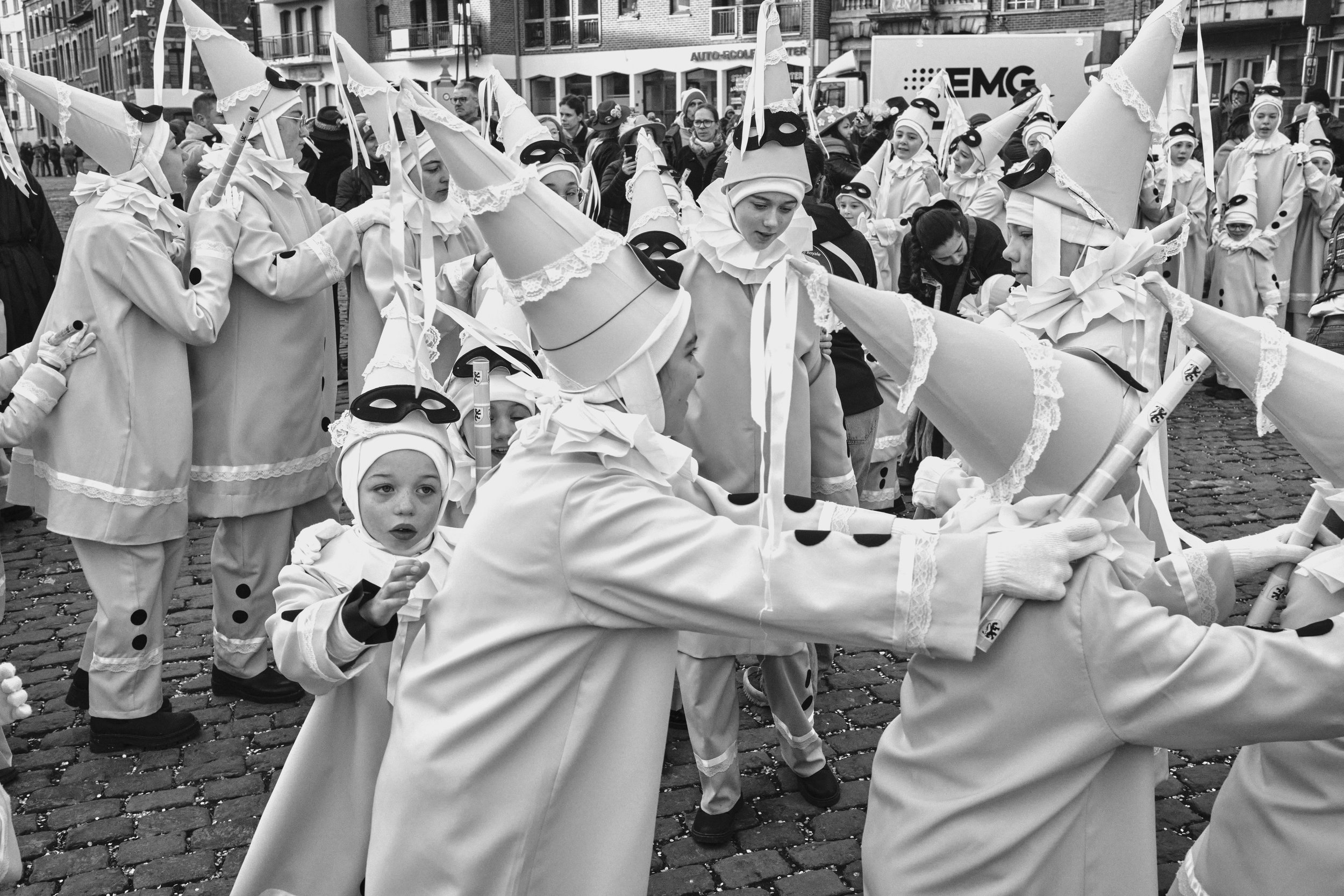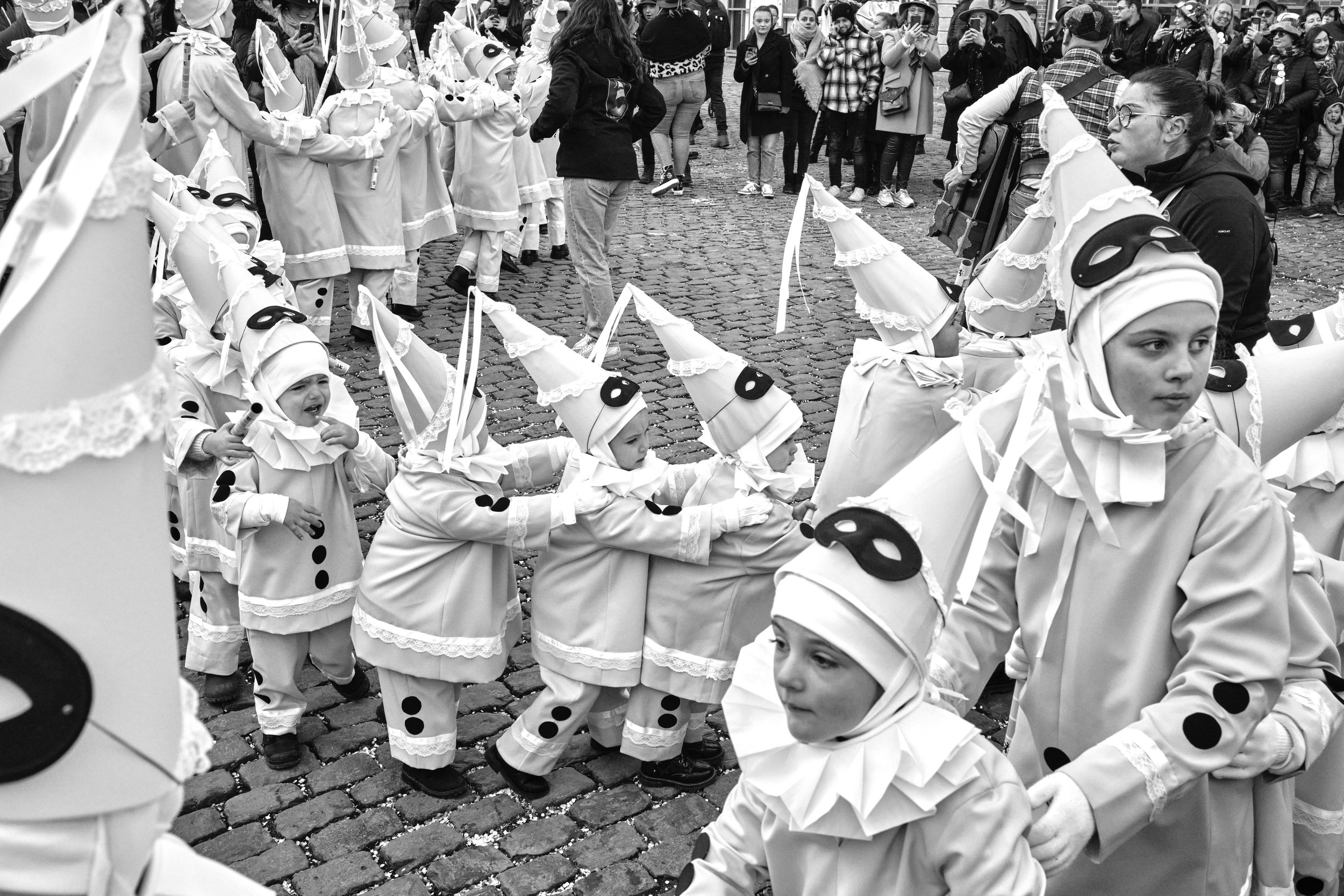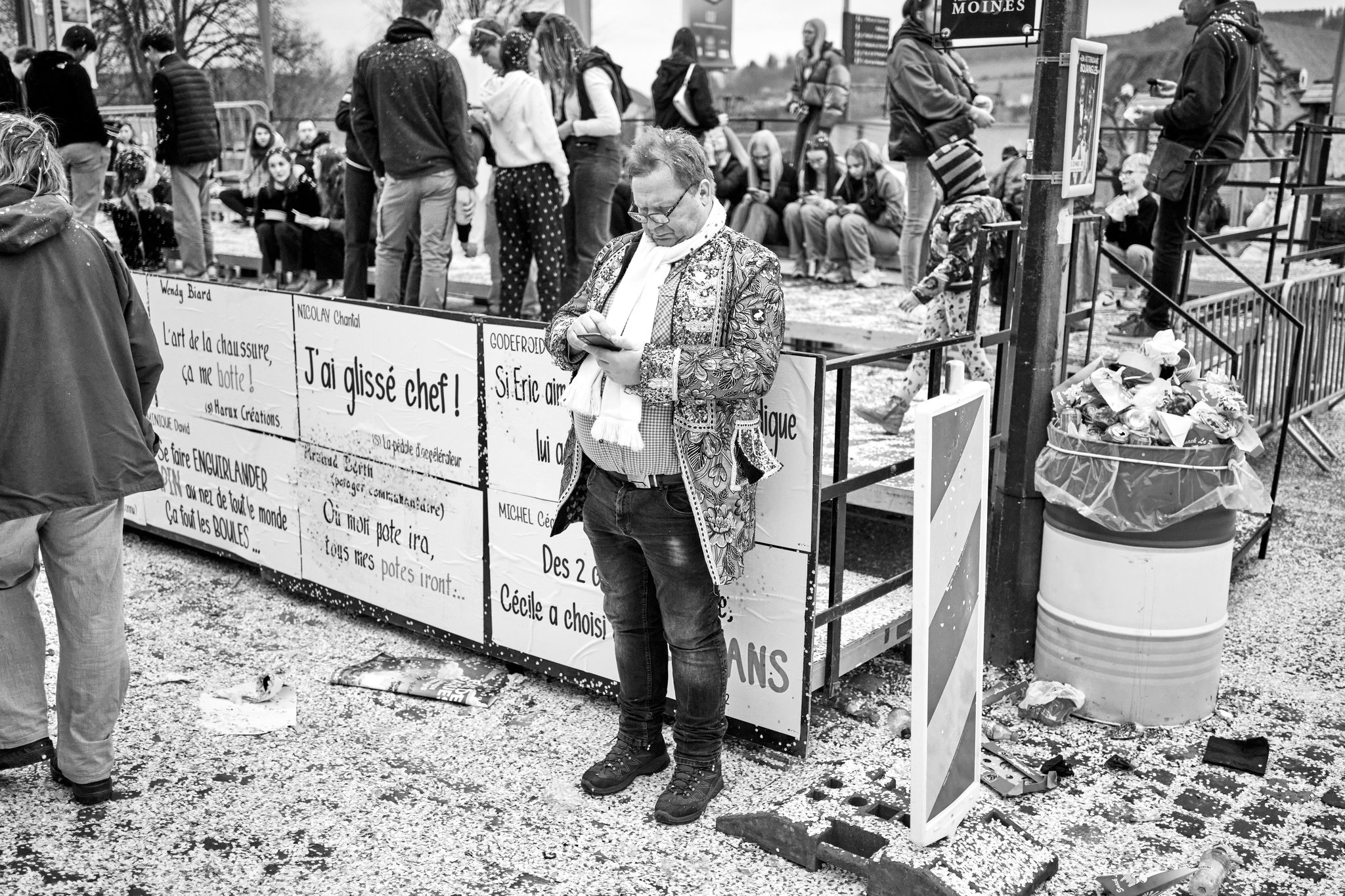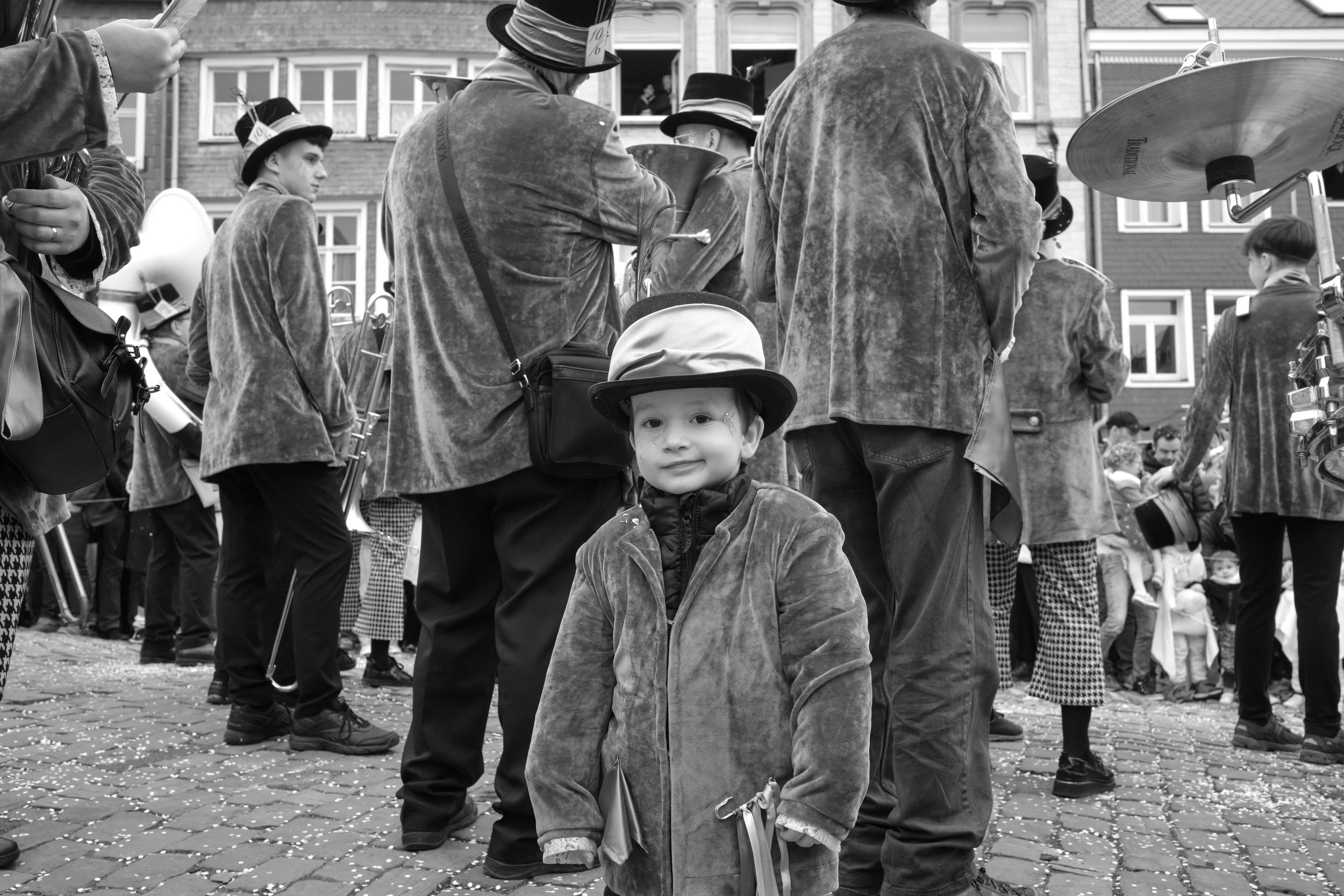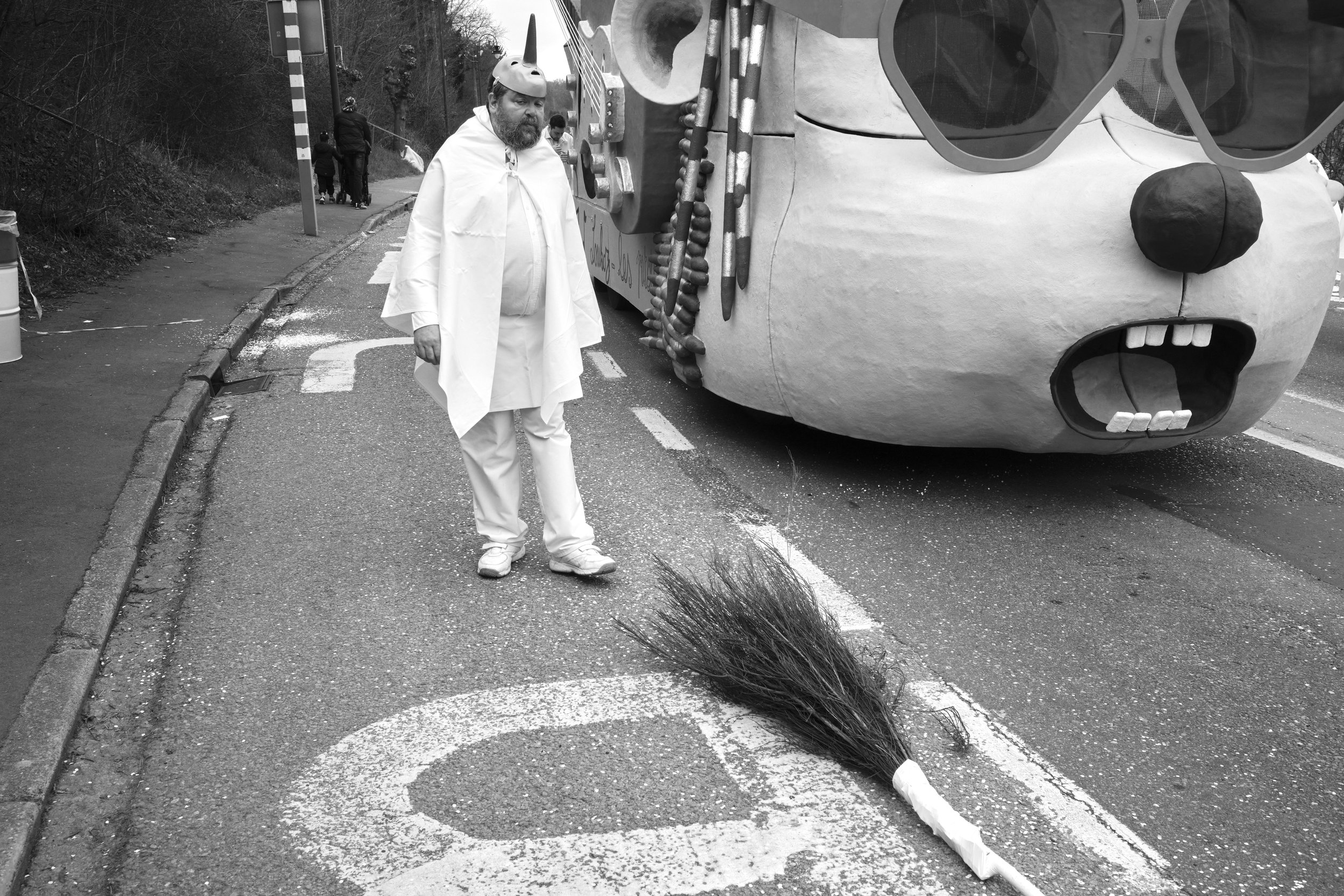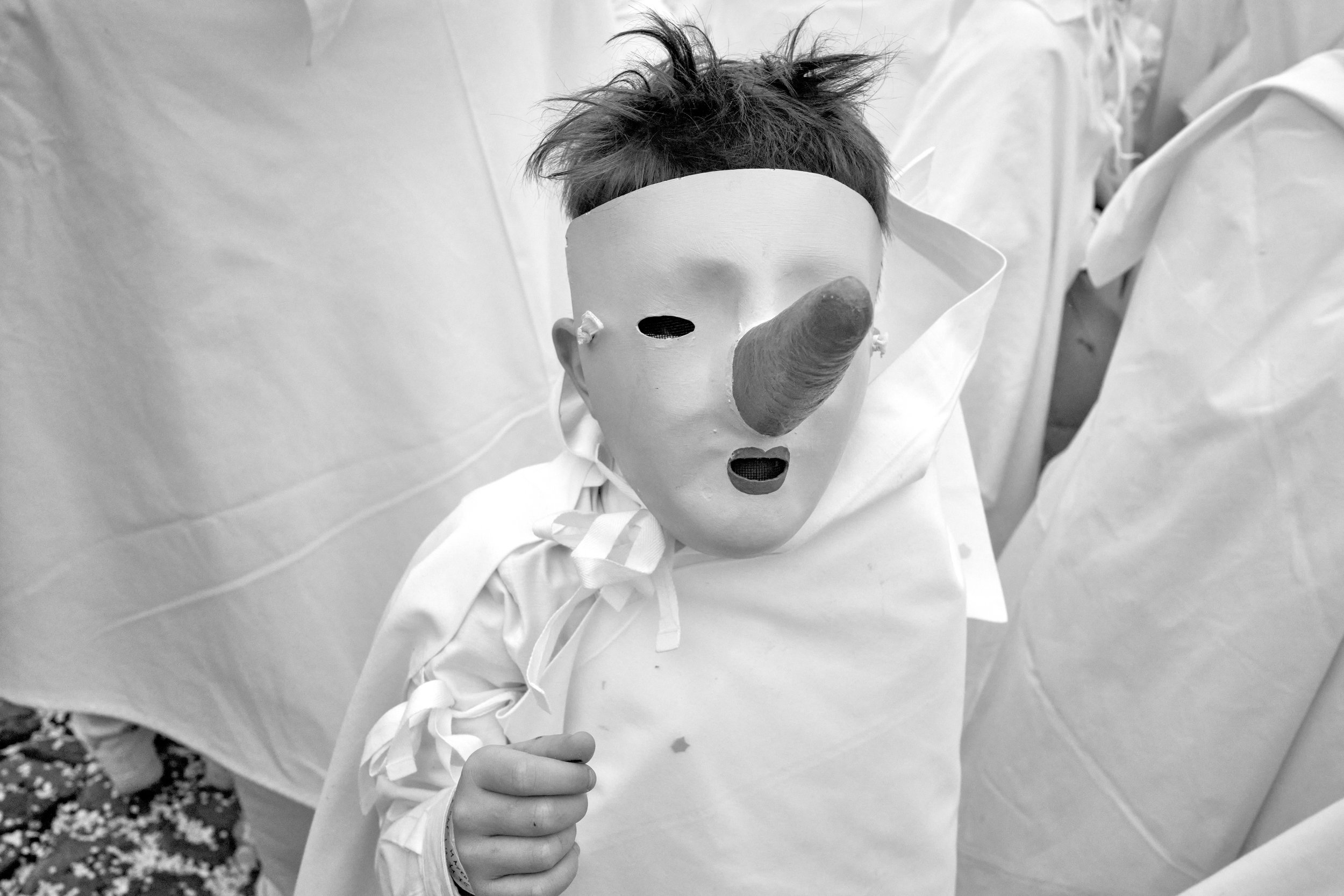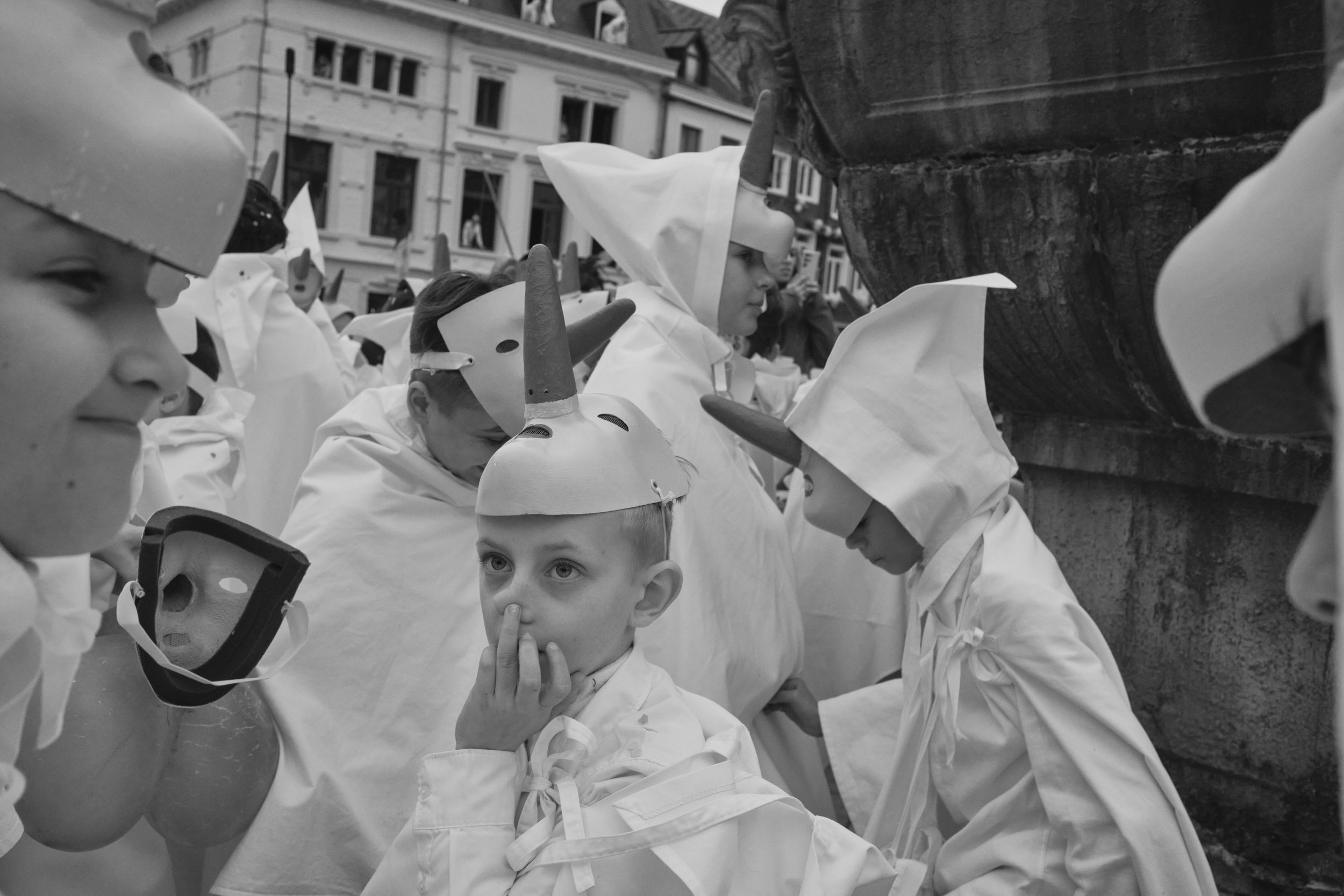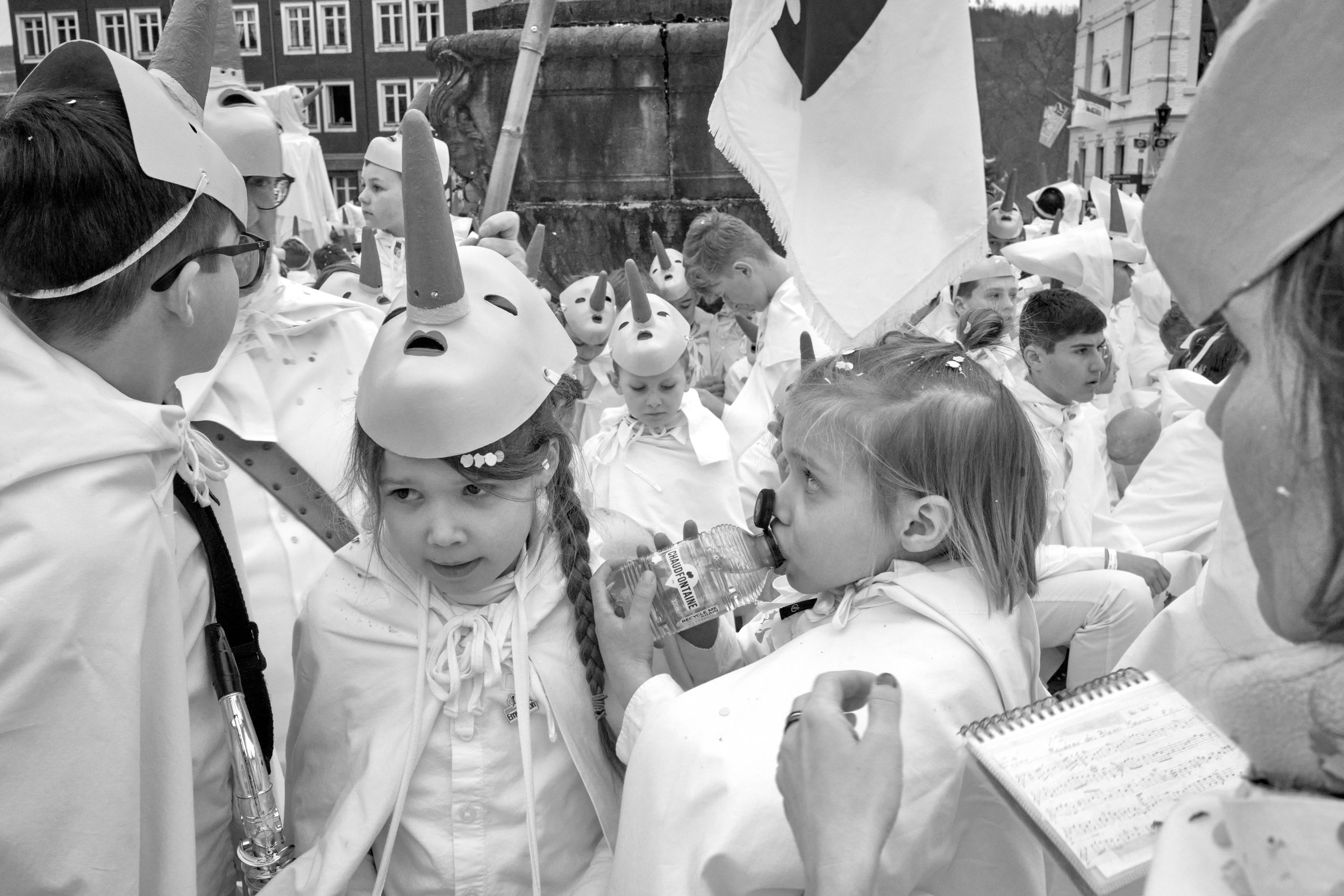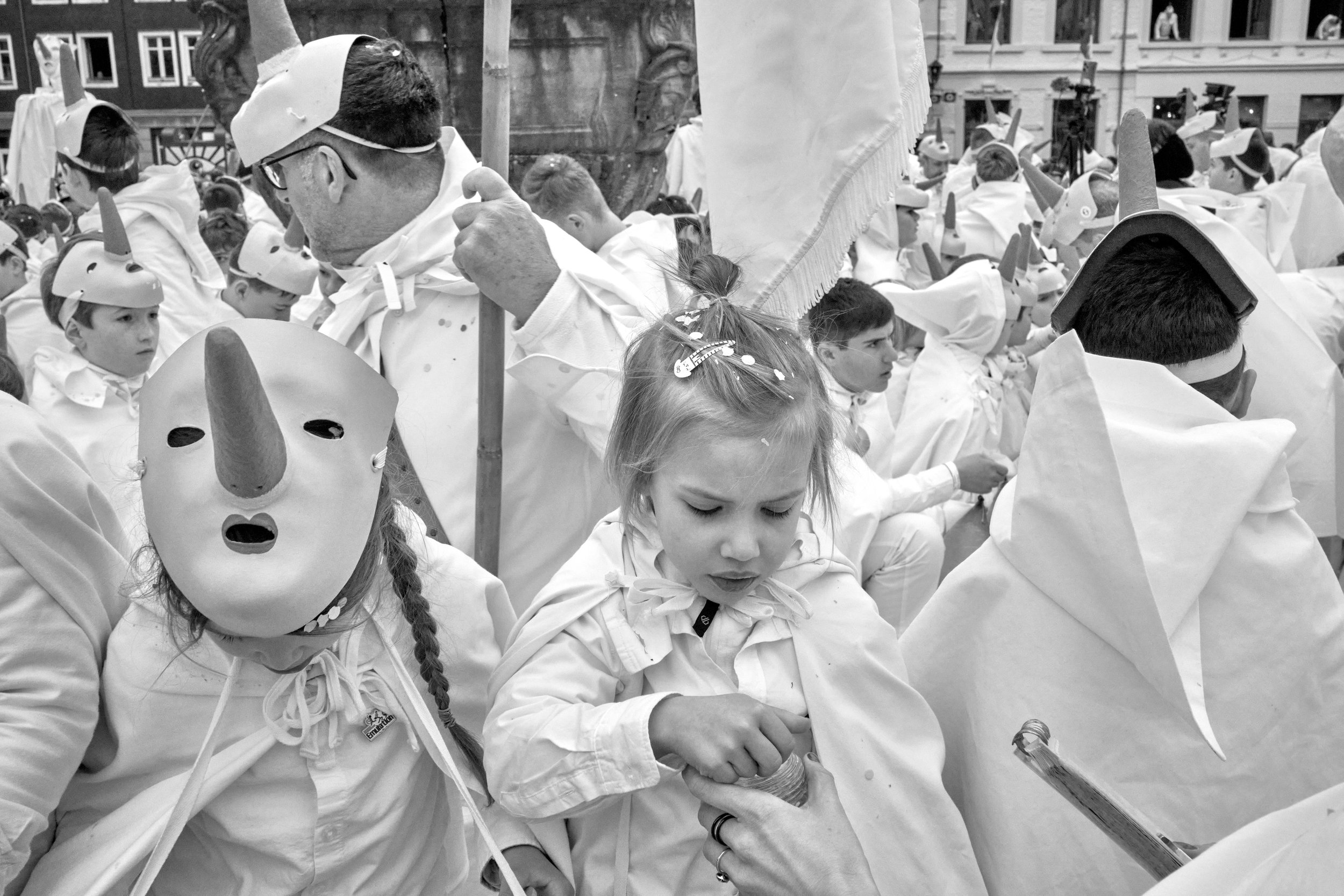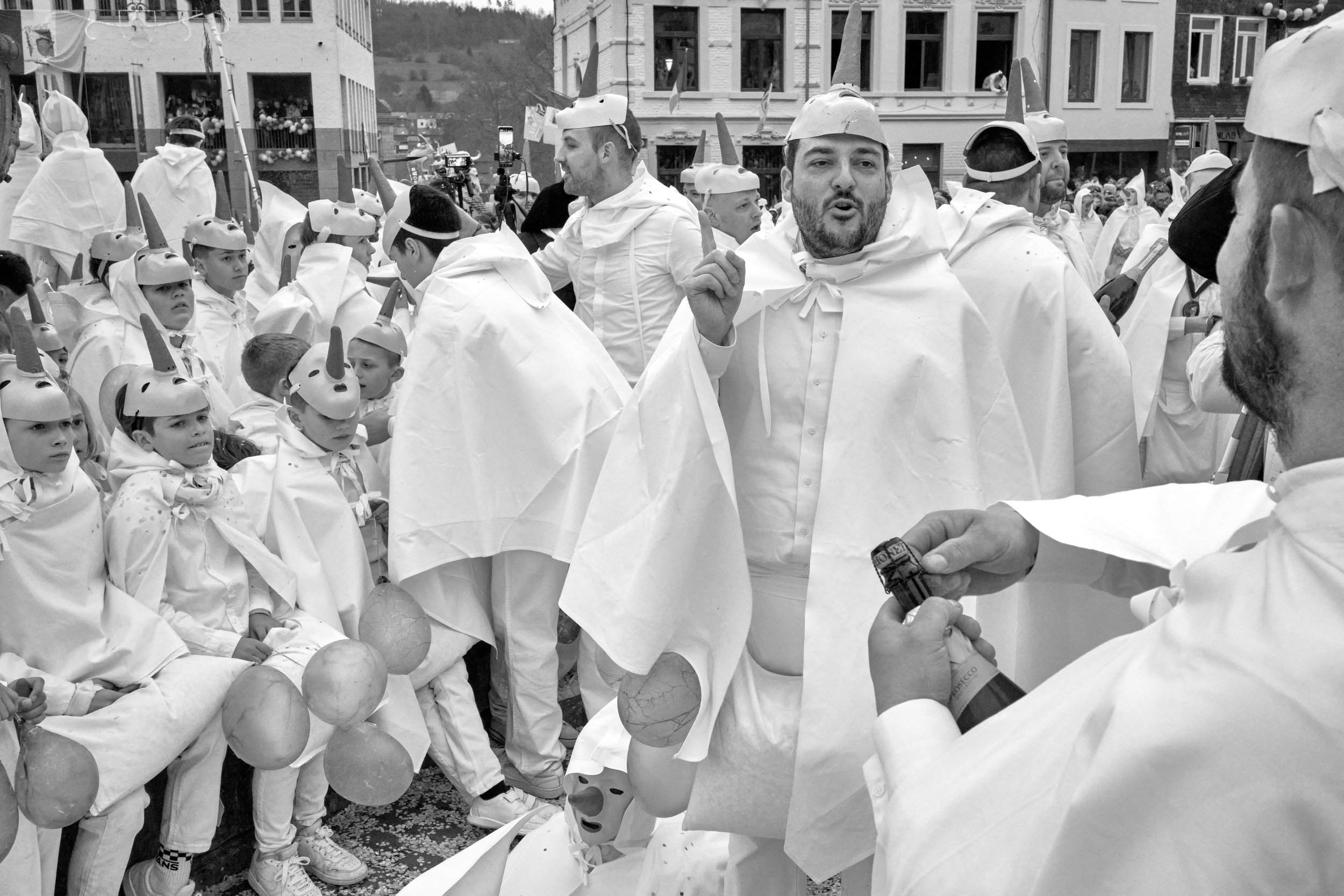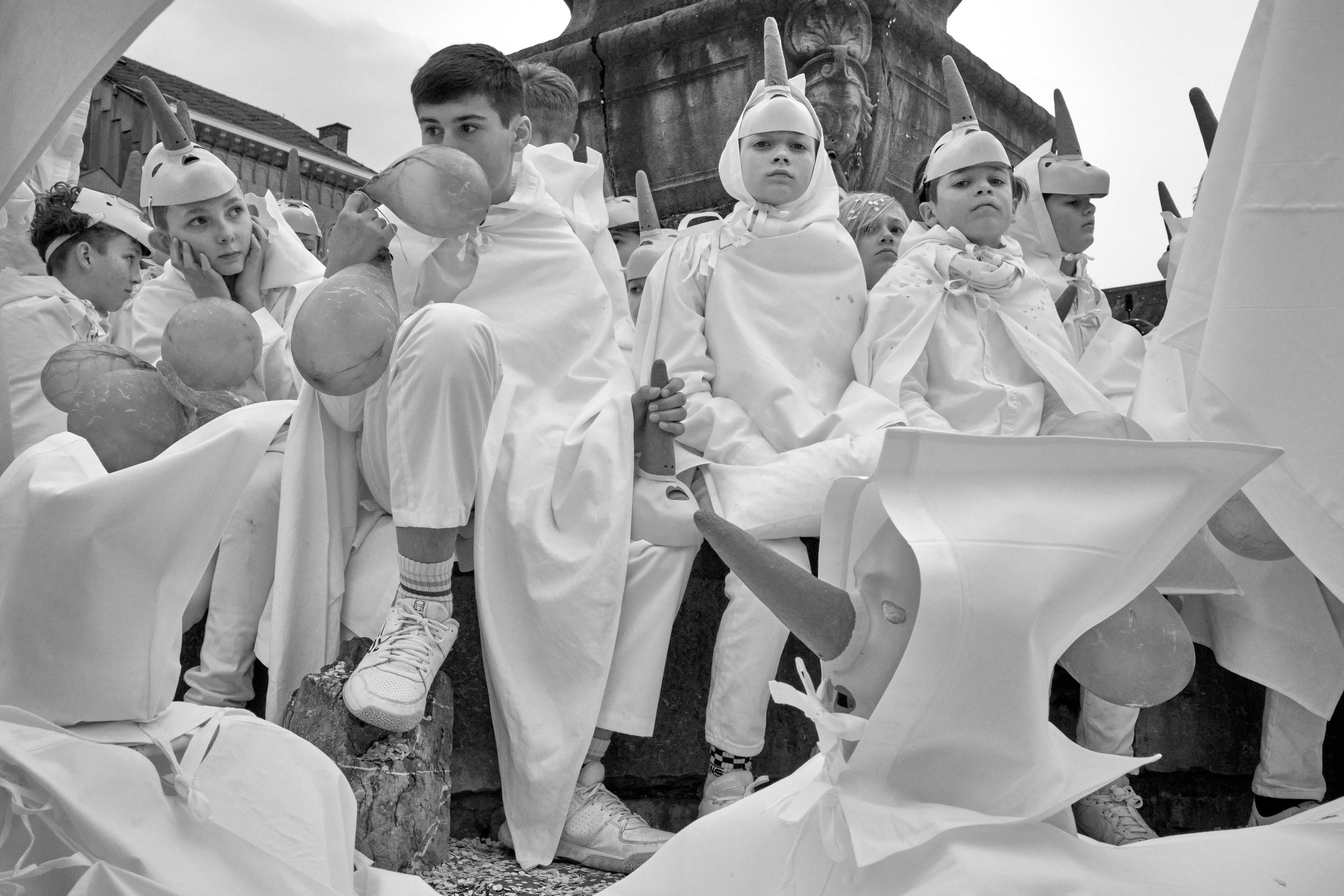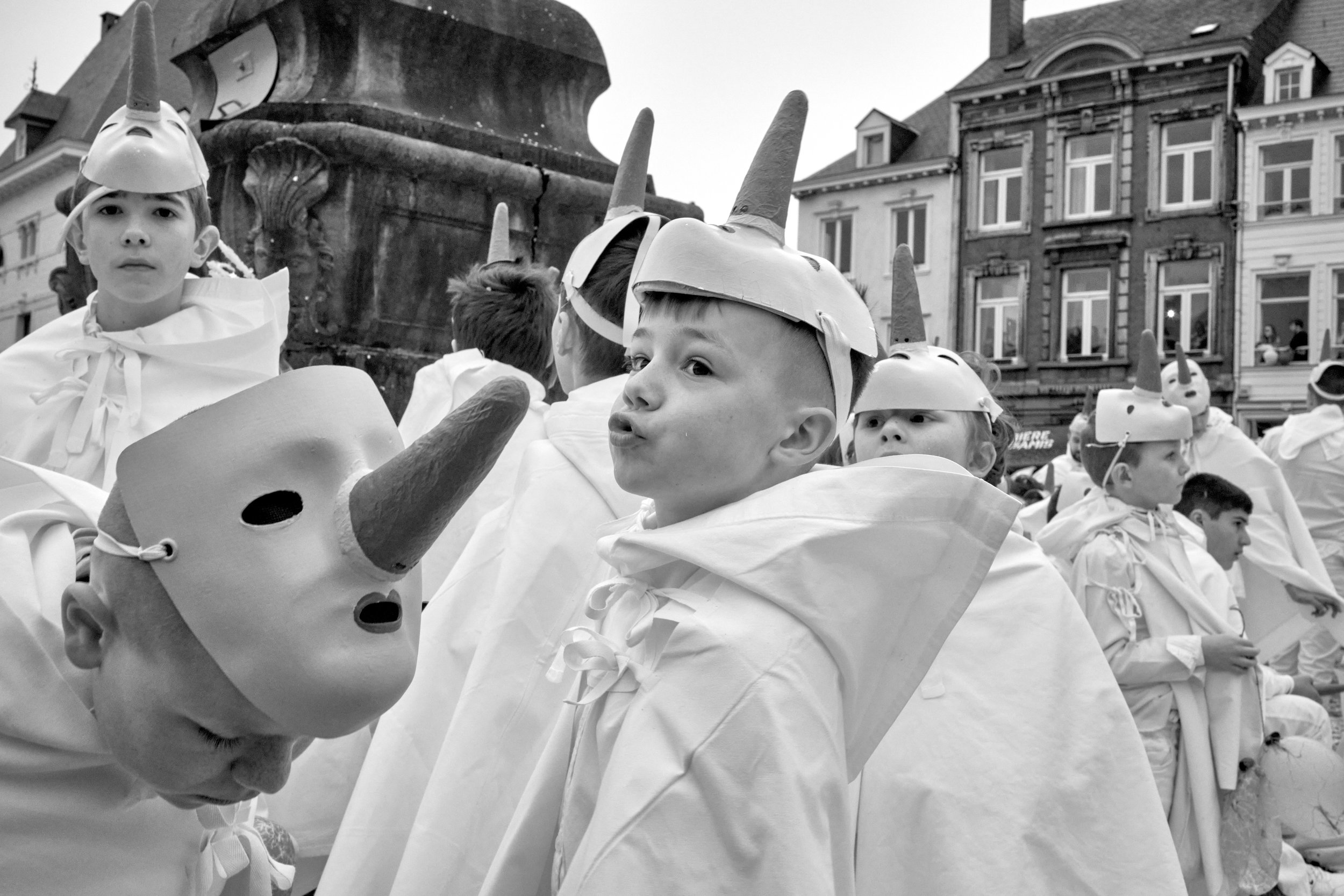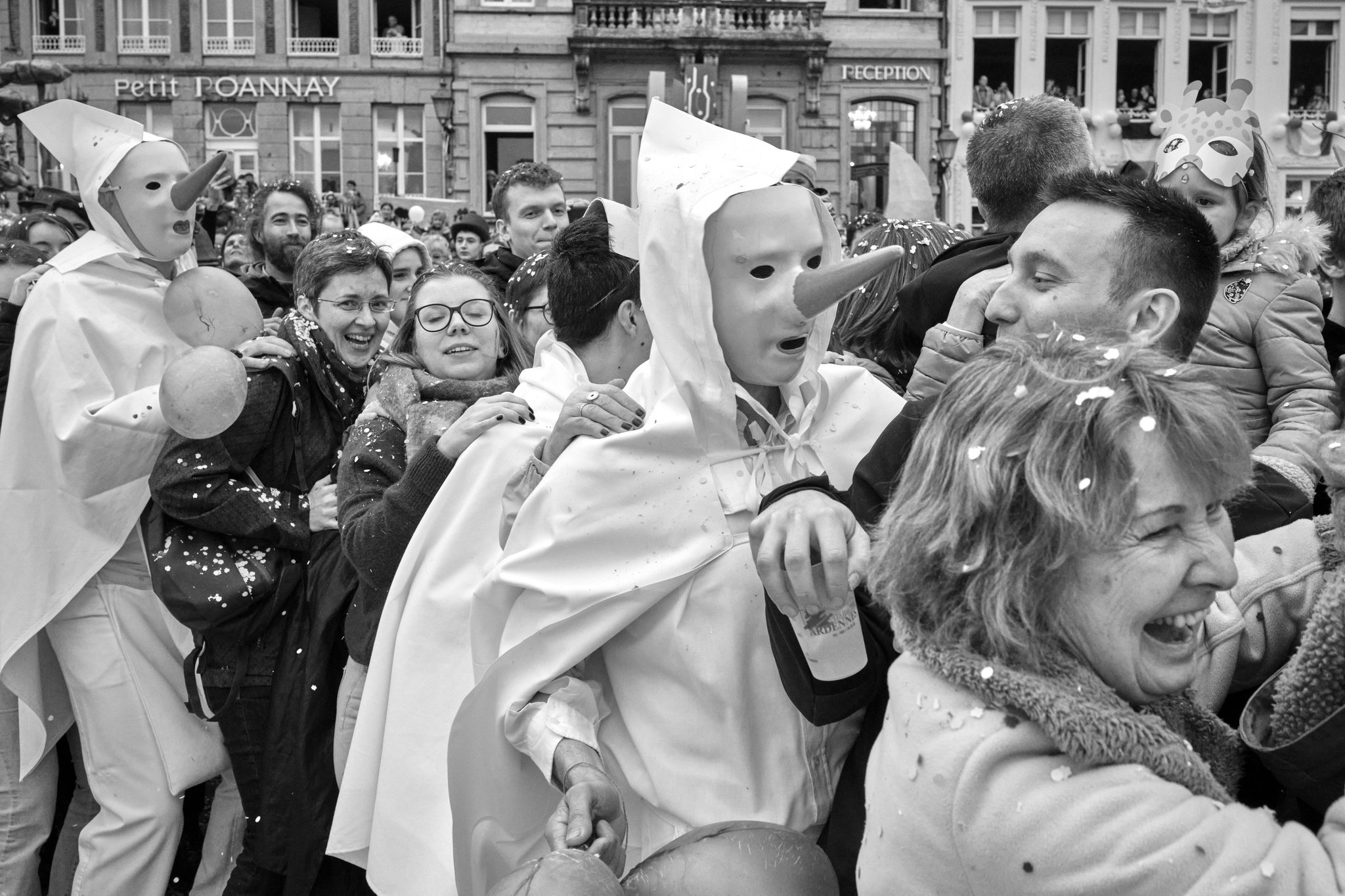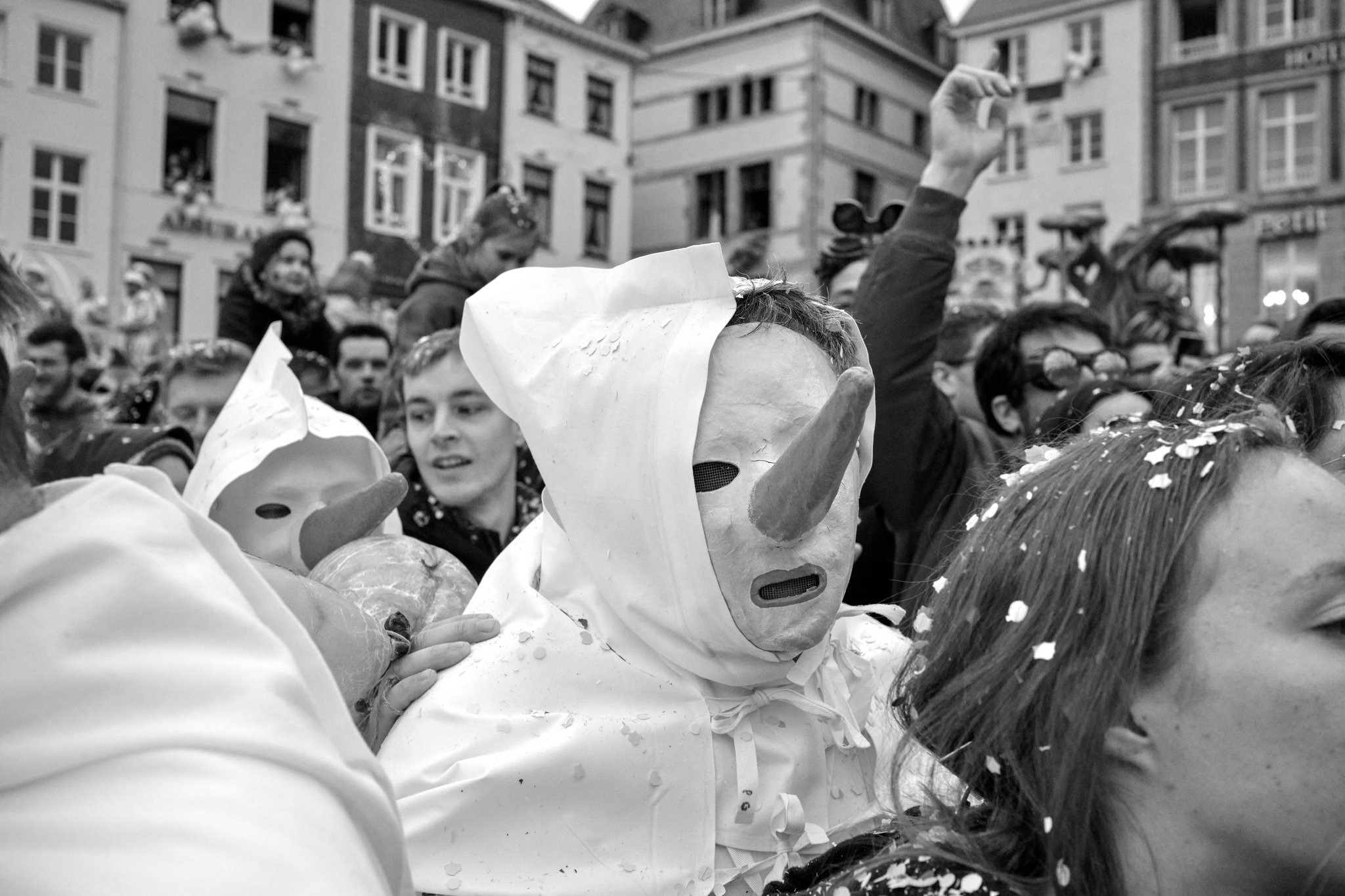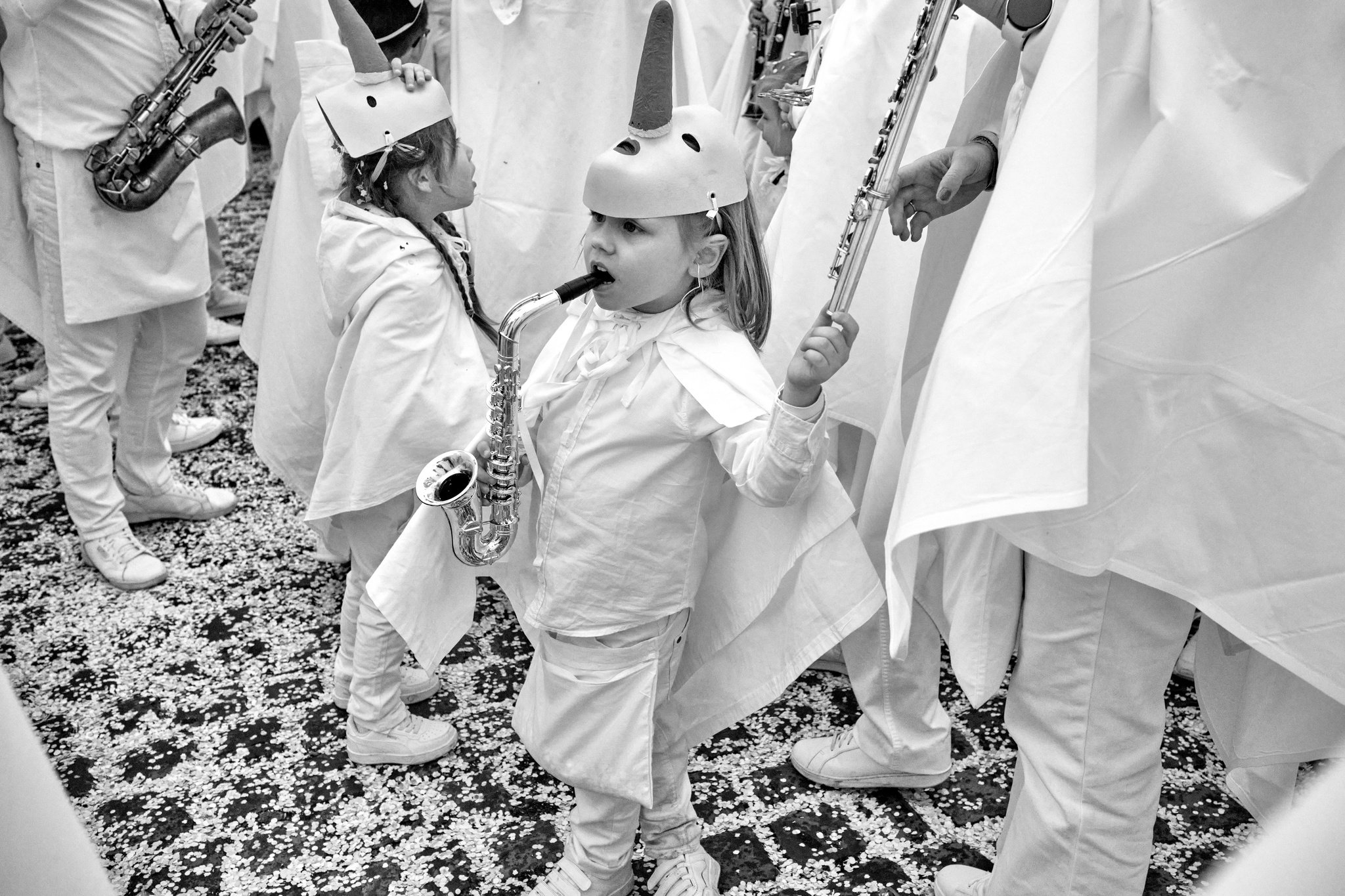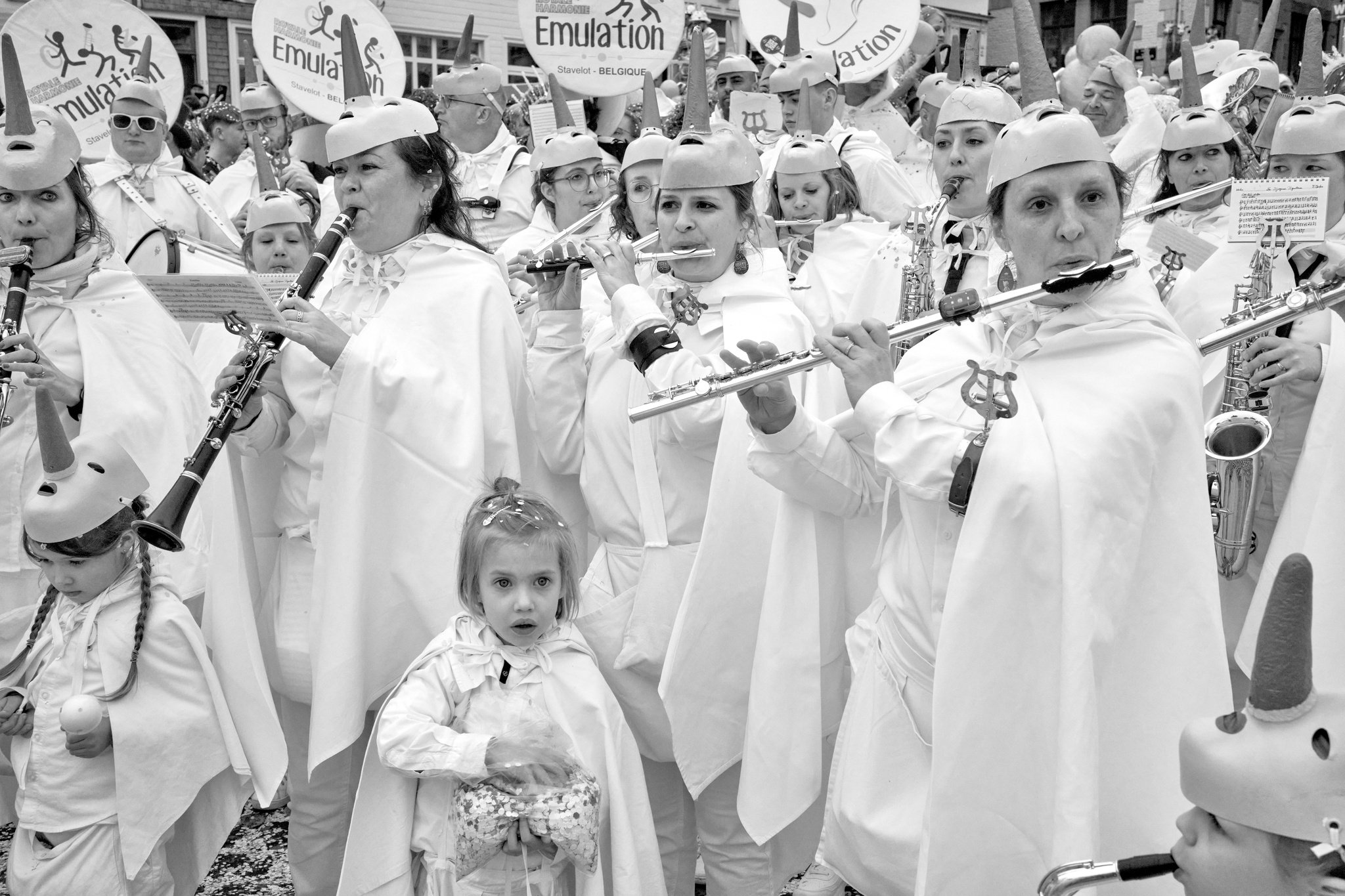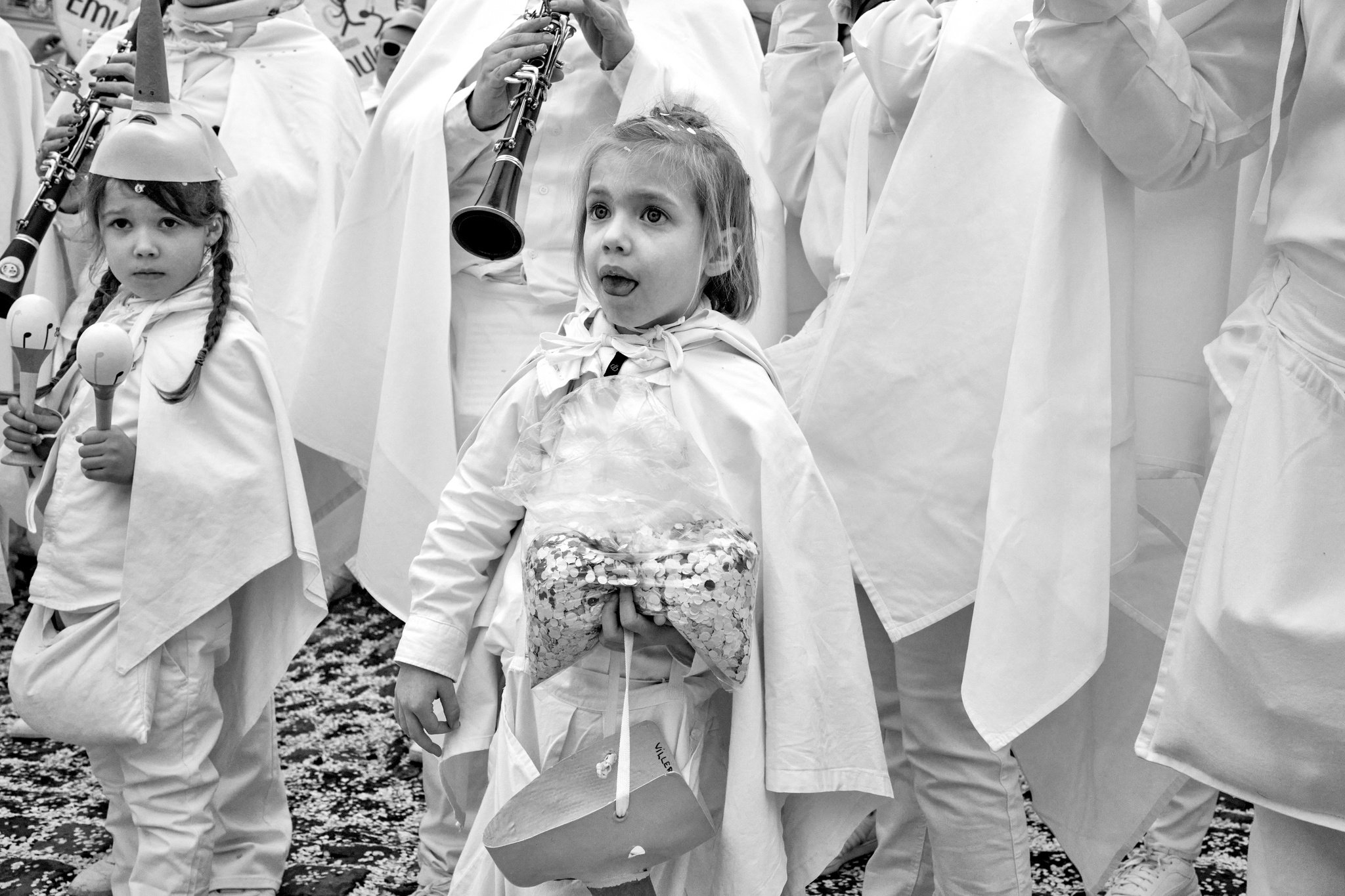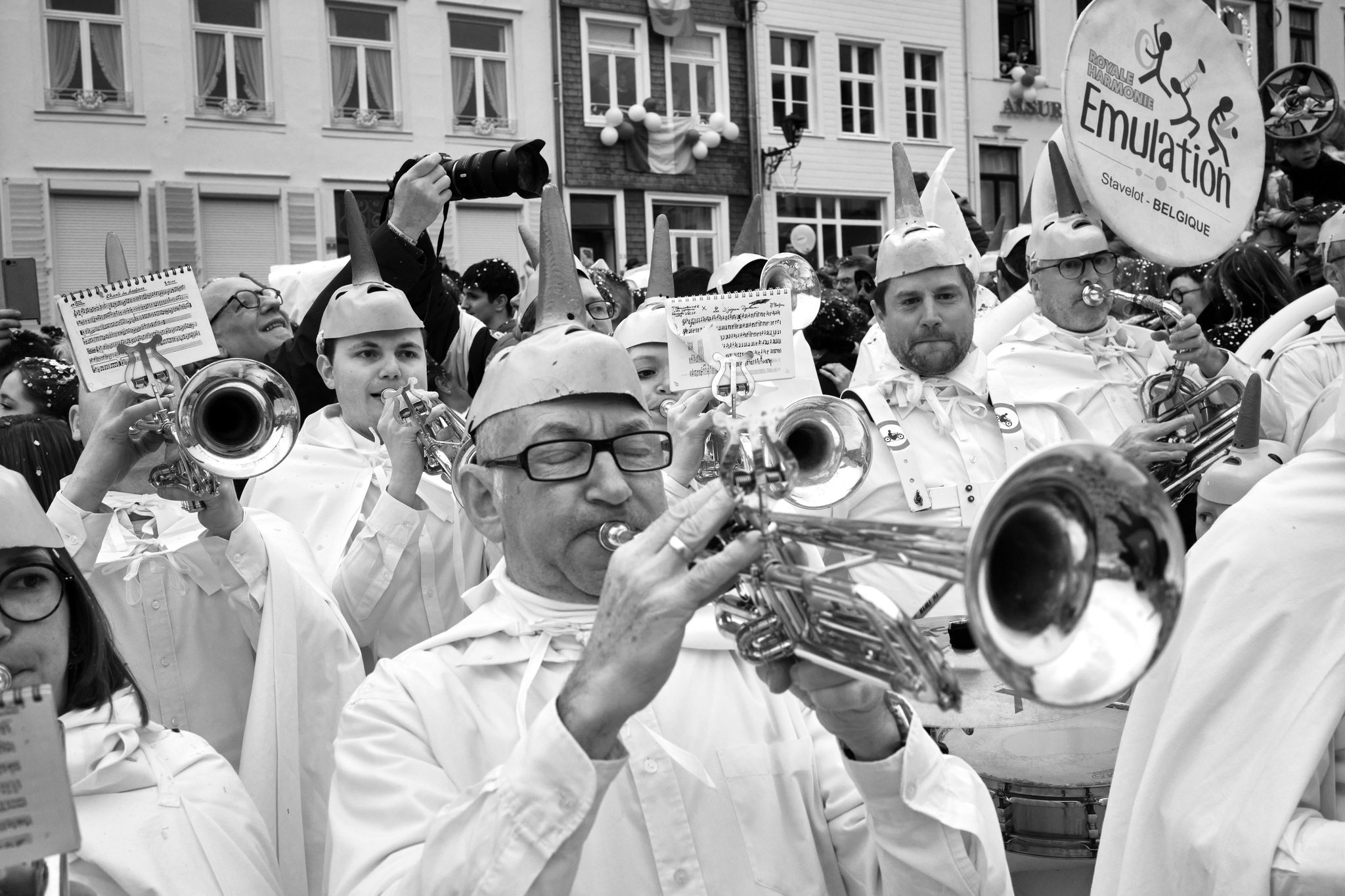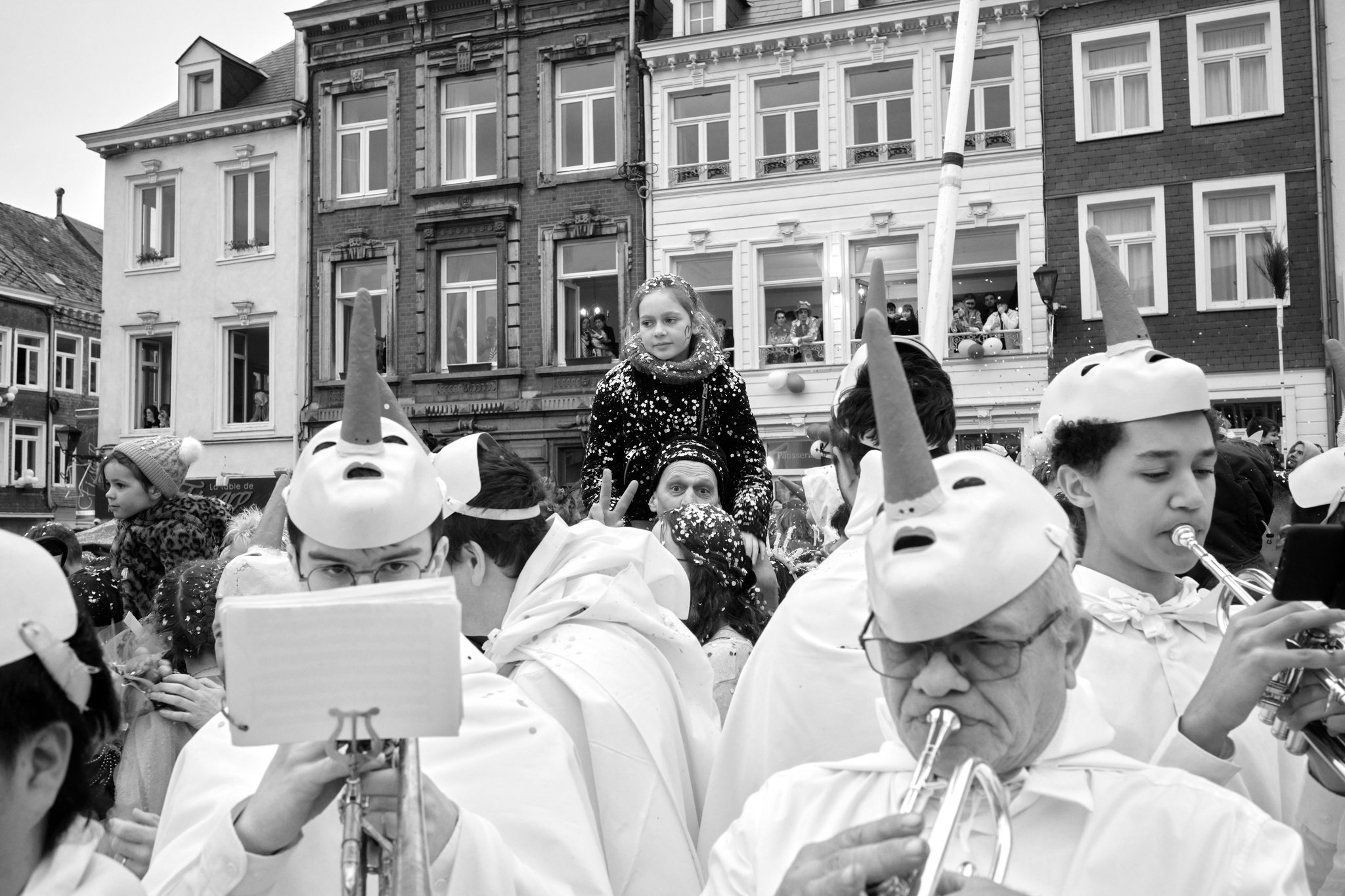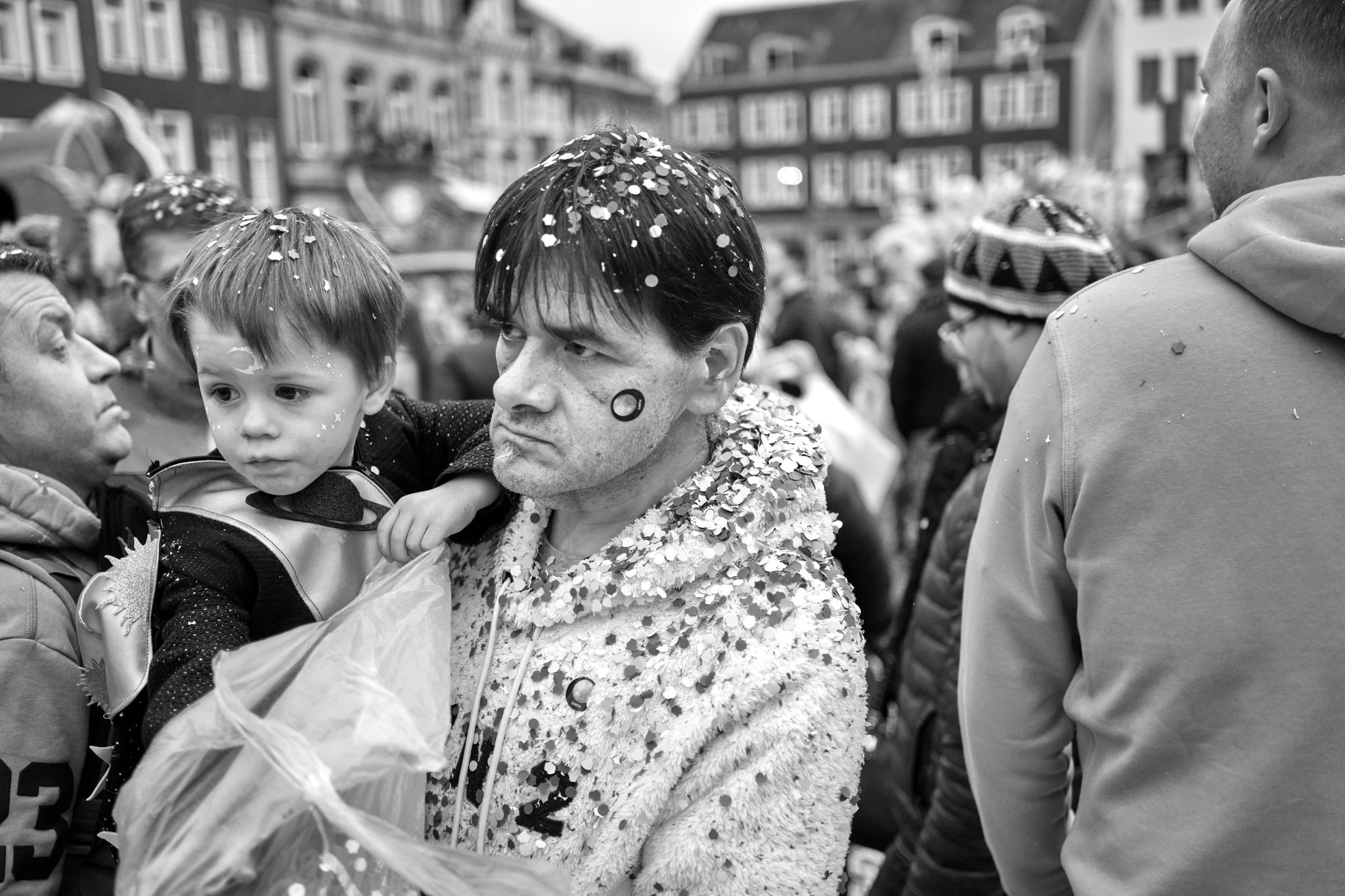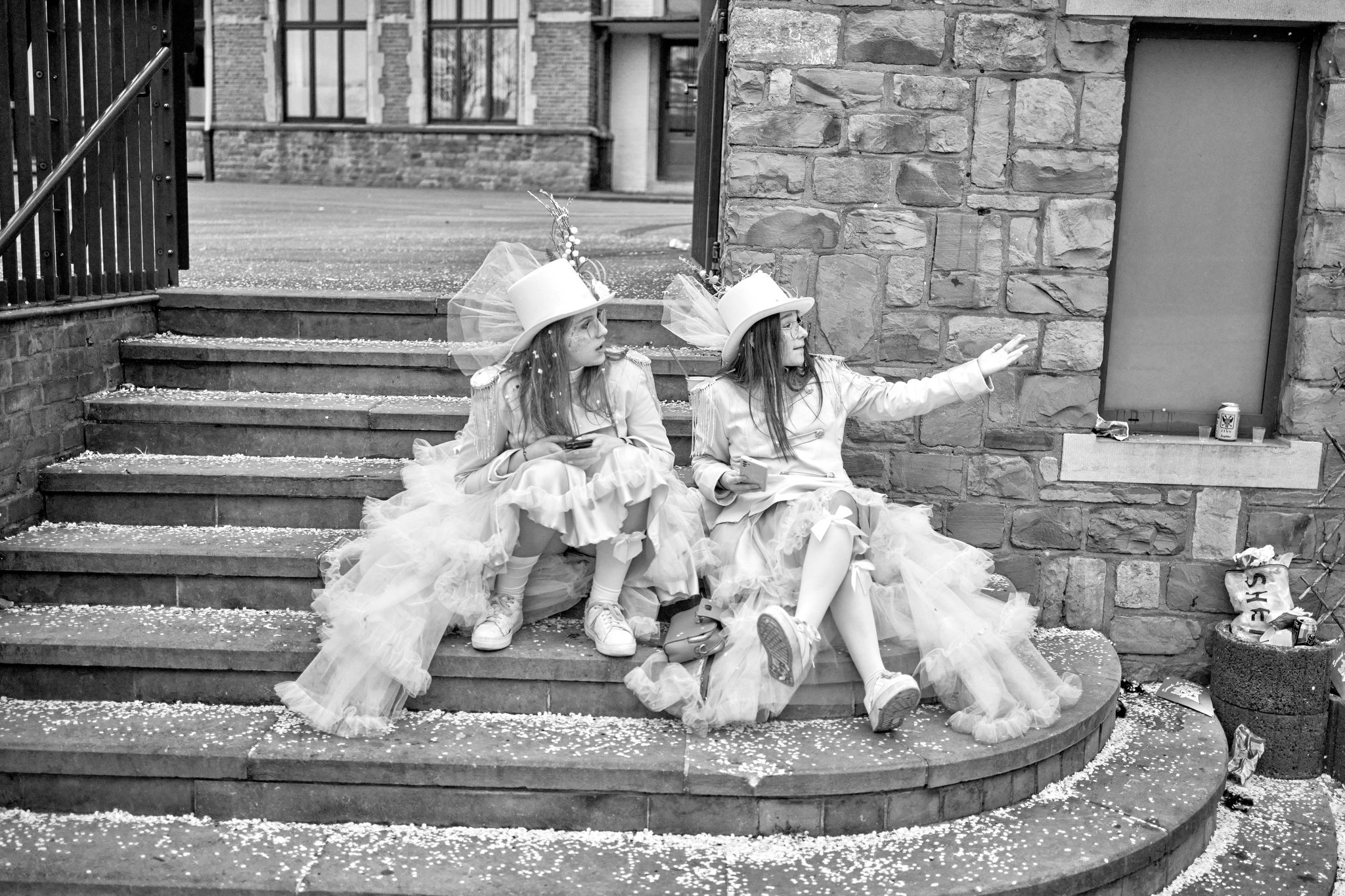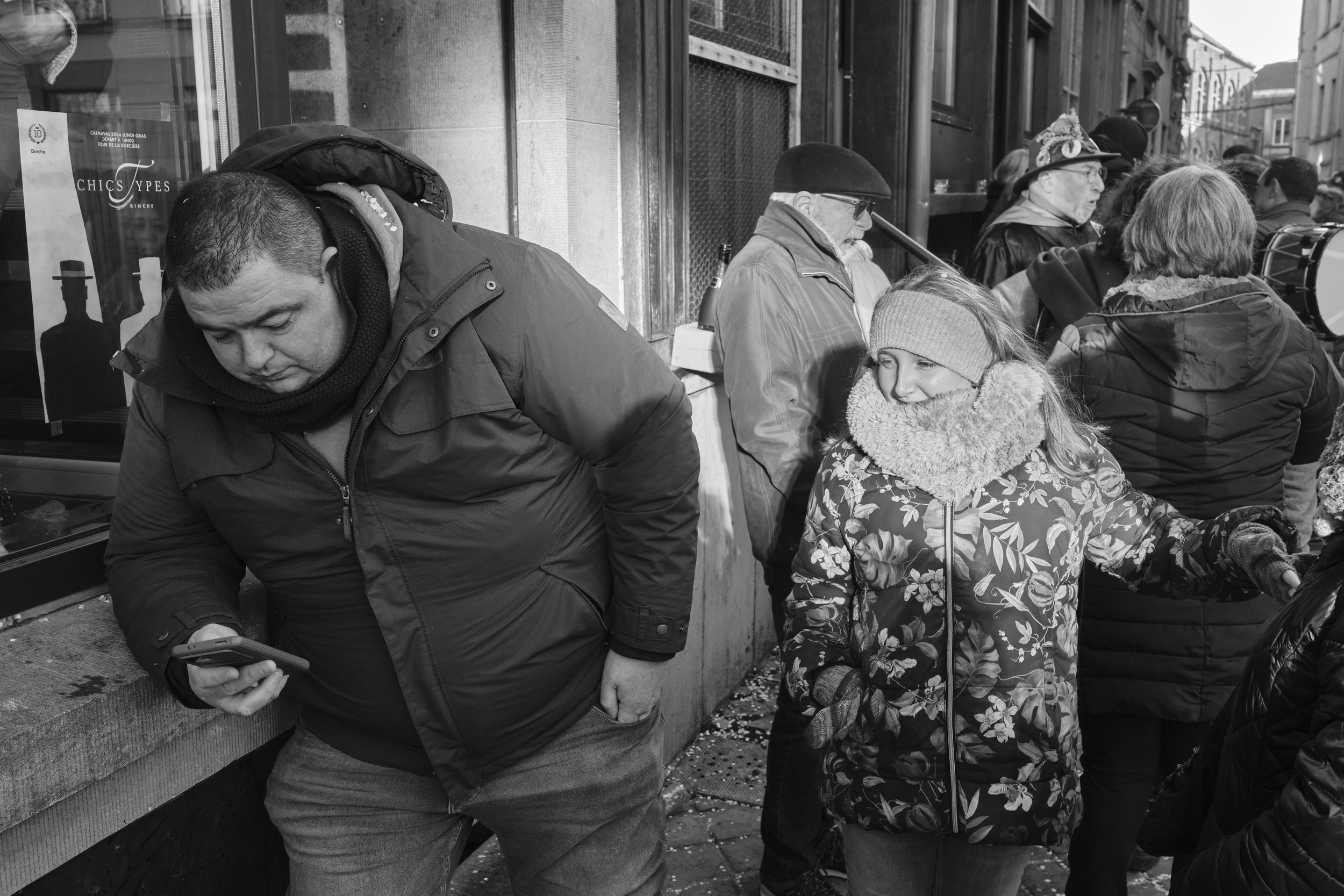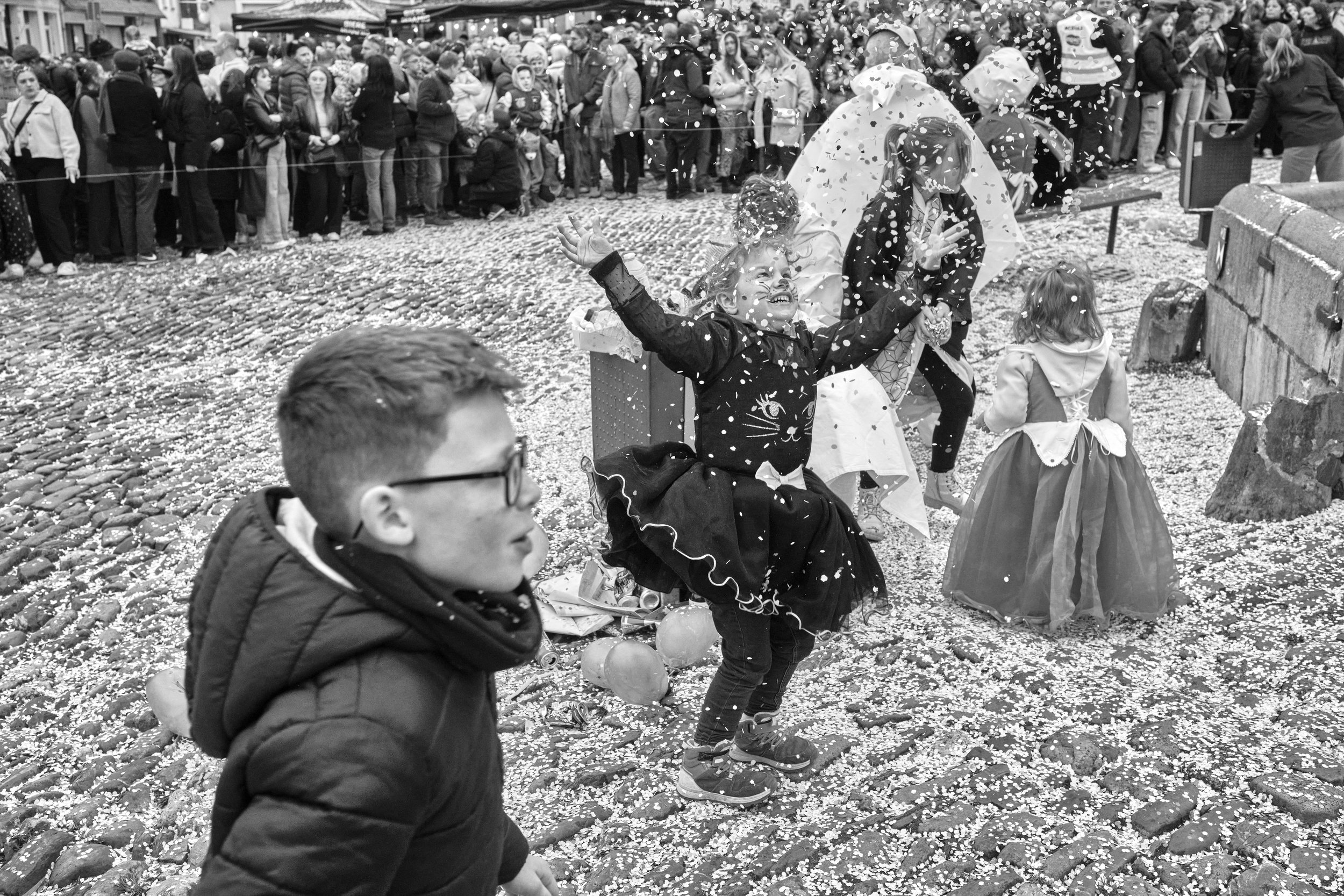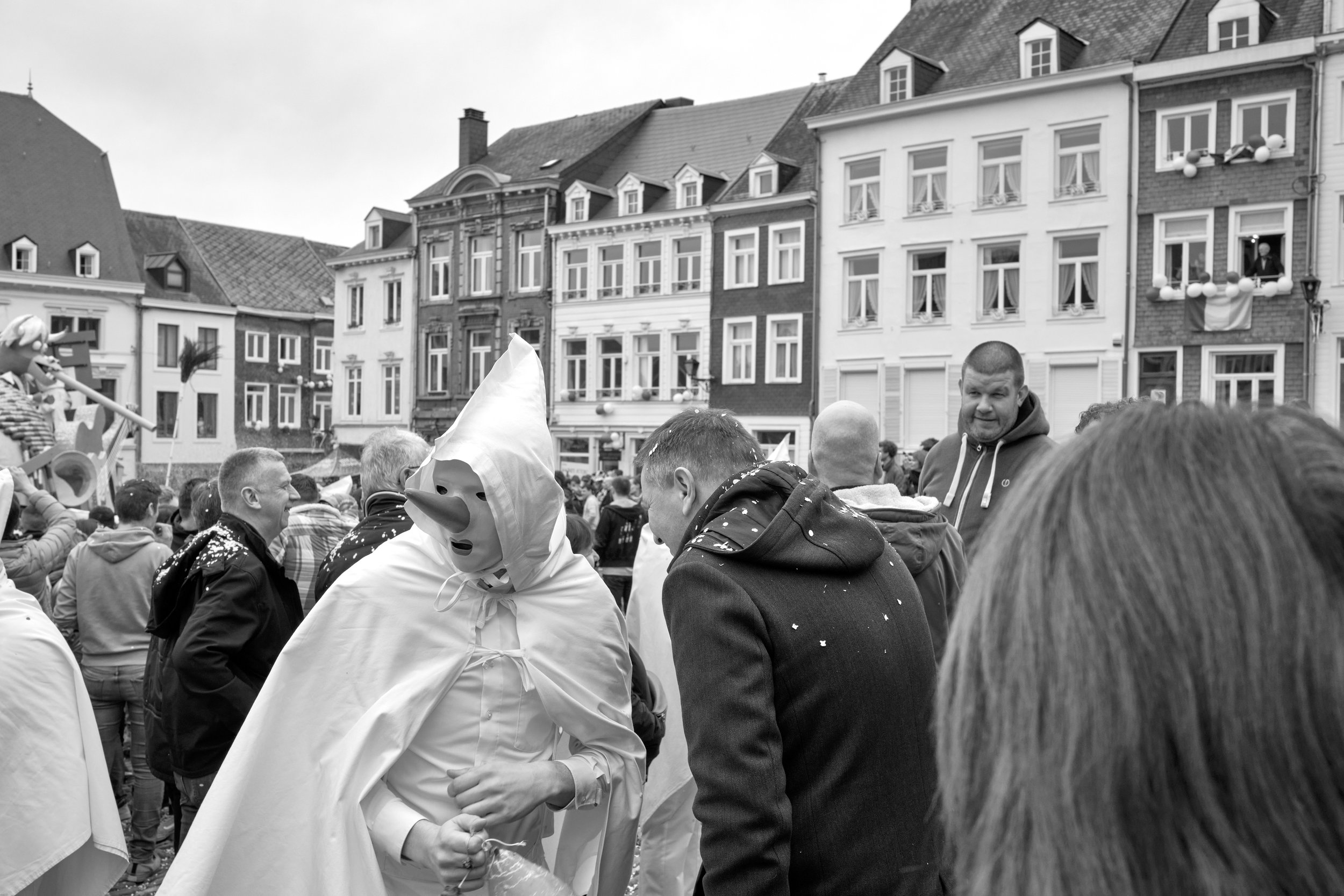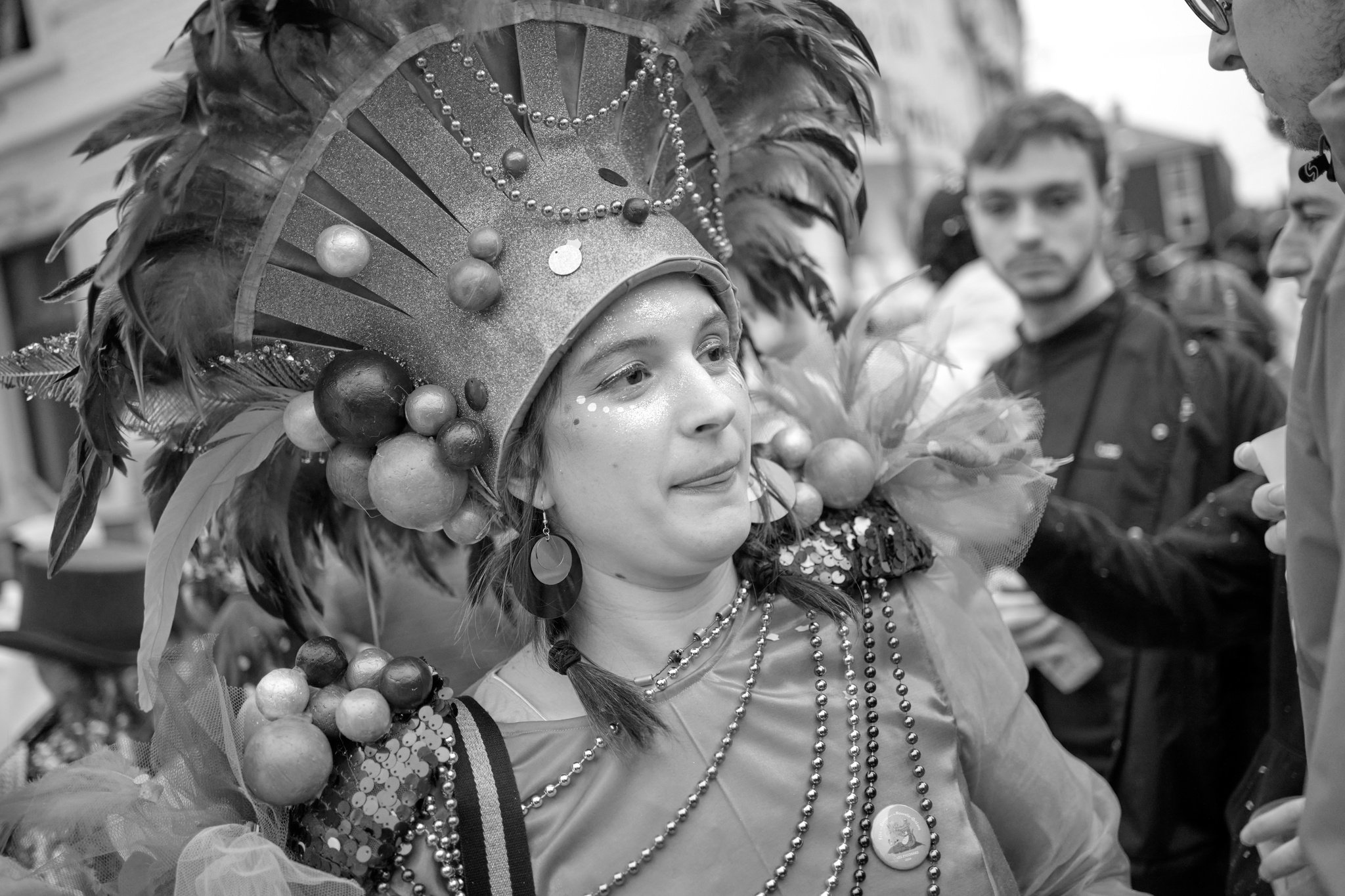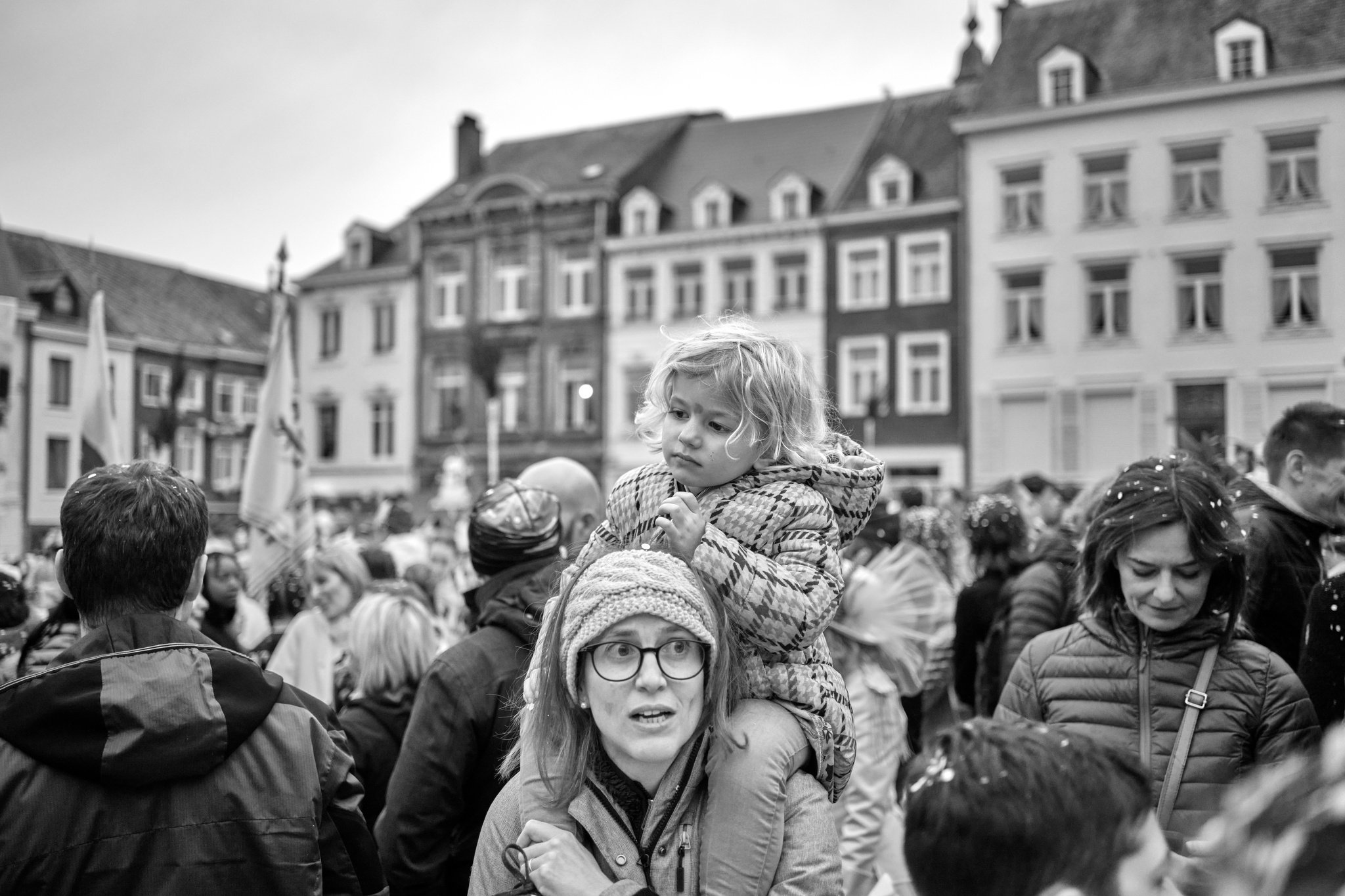Carnival in Belgium by Alain van Hille
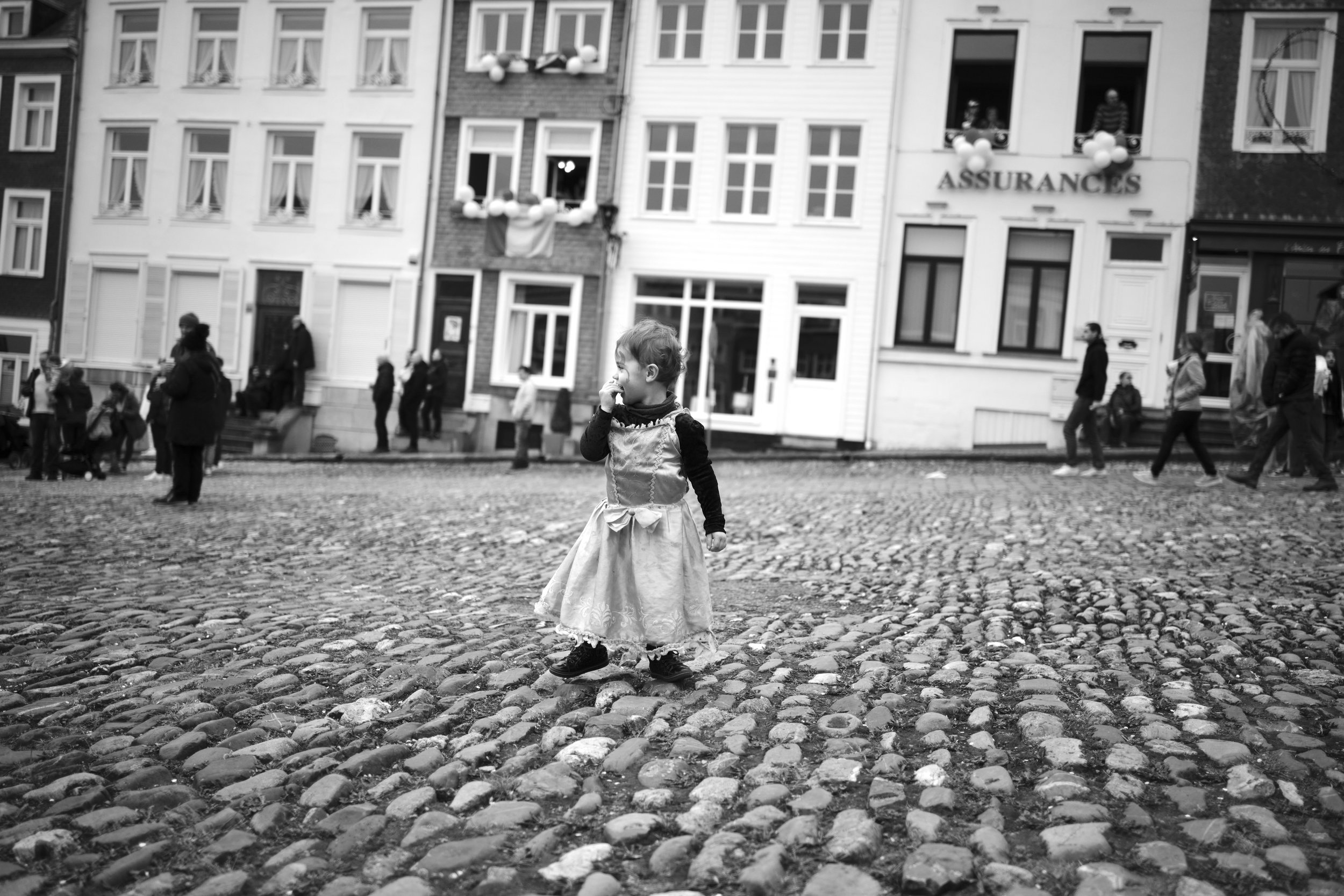
UNESCO recognises the Binche Carnival and Stavelot Carnival as Intangible Cultural Heritage. The former takes place in mid-February, while the latter is held during Laetare in March in the Belgian Ardennes. The Stavelot Carnival’s origin dates back to the end of the Middle Ages, when the monks of Stavelot joined the carnival festivities.
In 1499, Prince-Abbot William of Manderscheidt imposed severe sanctions against the monks for their behaviour. In response, the people of Stavelot created their own carnival costume, imitating the monks' hood and a large robe. However, the Prince-Abbot banned this garment. The Stavelotans then replaced it with a white robe, still reminiscent of the religious outfit, and completed it by wearing a hilarious mask with a long nose. In Binche, the Gille with his feather hat first appeared in 1795 as a character protesting against the French political regime of the Directory, which wanted to prohibit the wearing of masks.
According to the most popular legend, imagined by journalist Adolphe Delmée in the 19th century, the Gille is a descendant of the Incas. In 1549, during the celebrations organised by Mary of Hungary to welcome her brother, Charles Quint, the Incas appeared in costume in a procession as tattooed wild men with feathers on their heads.
